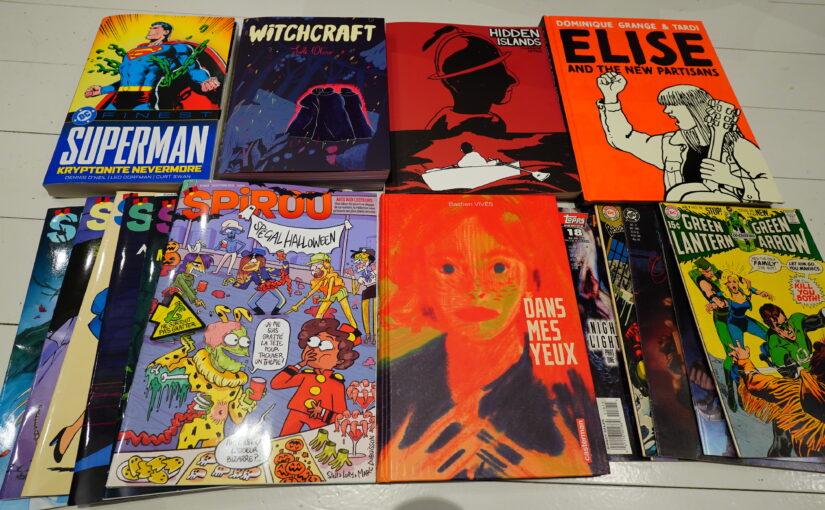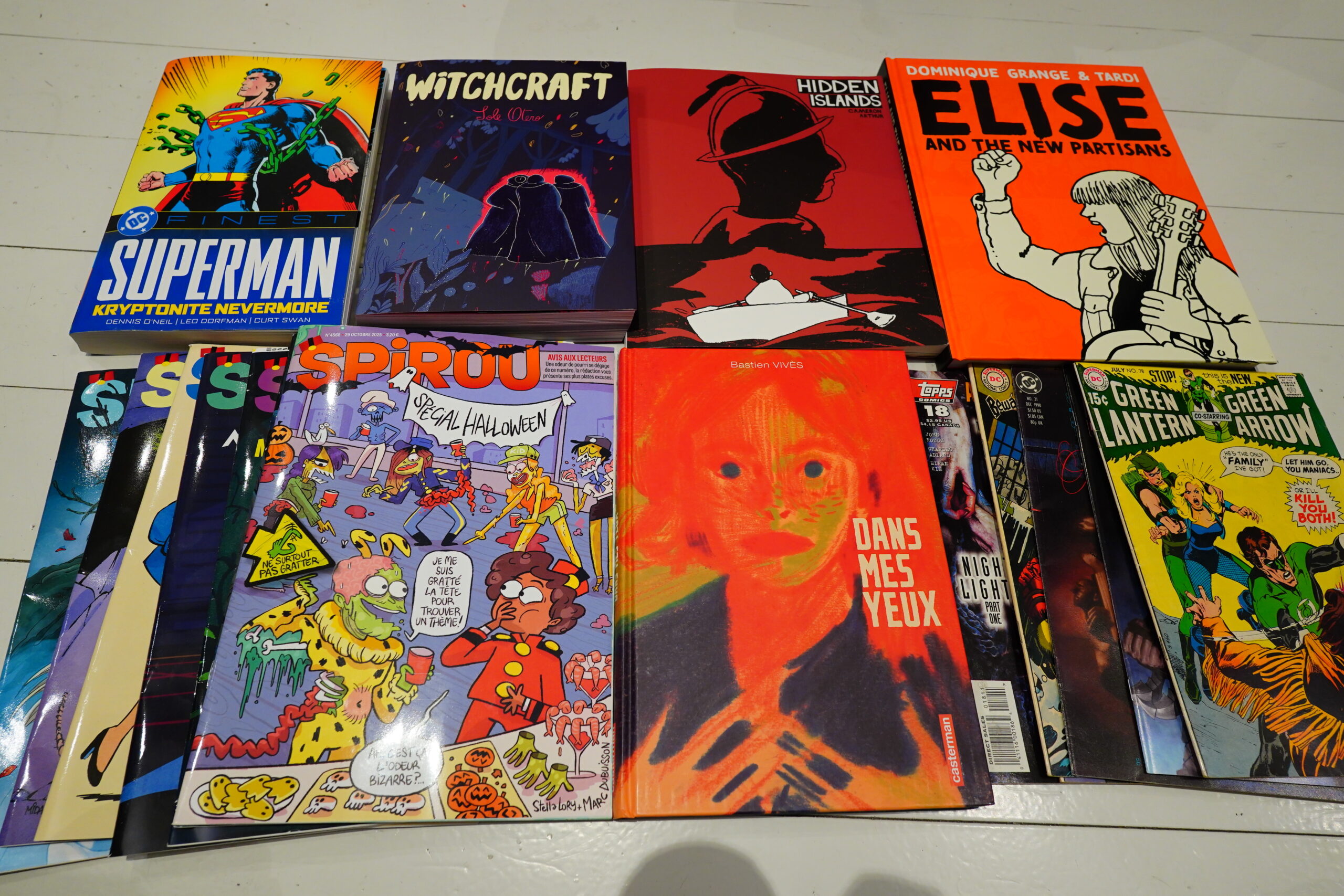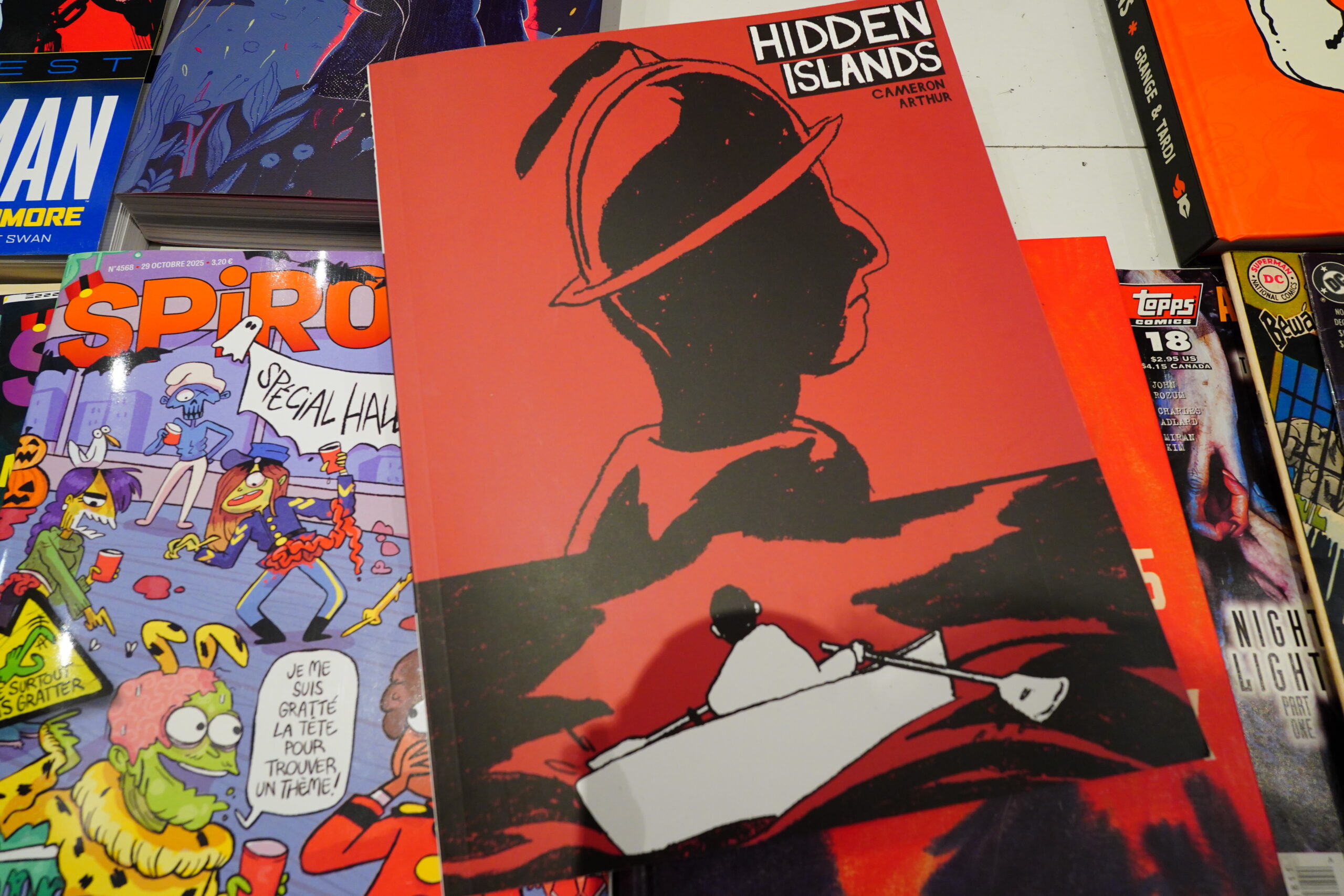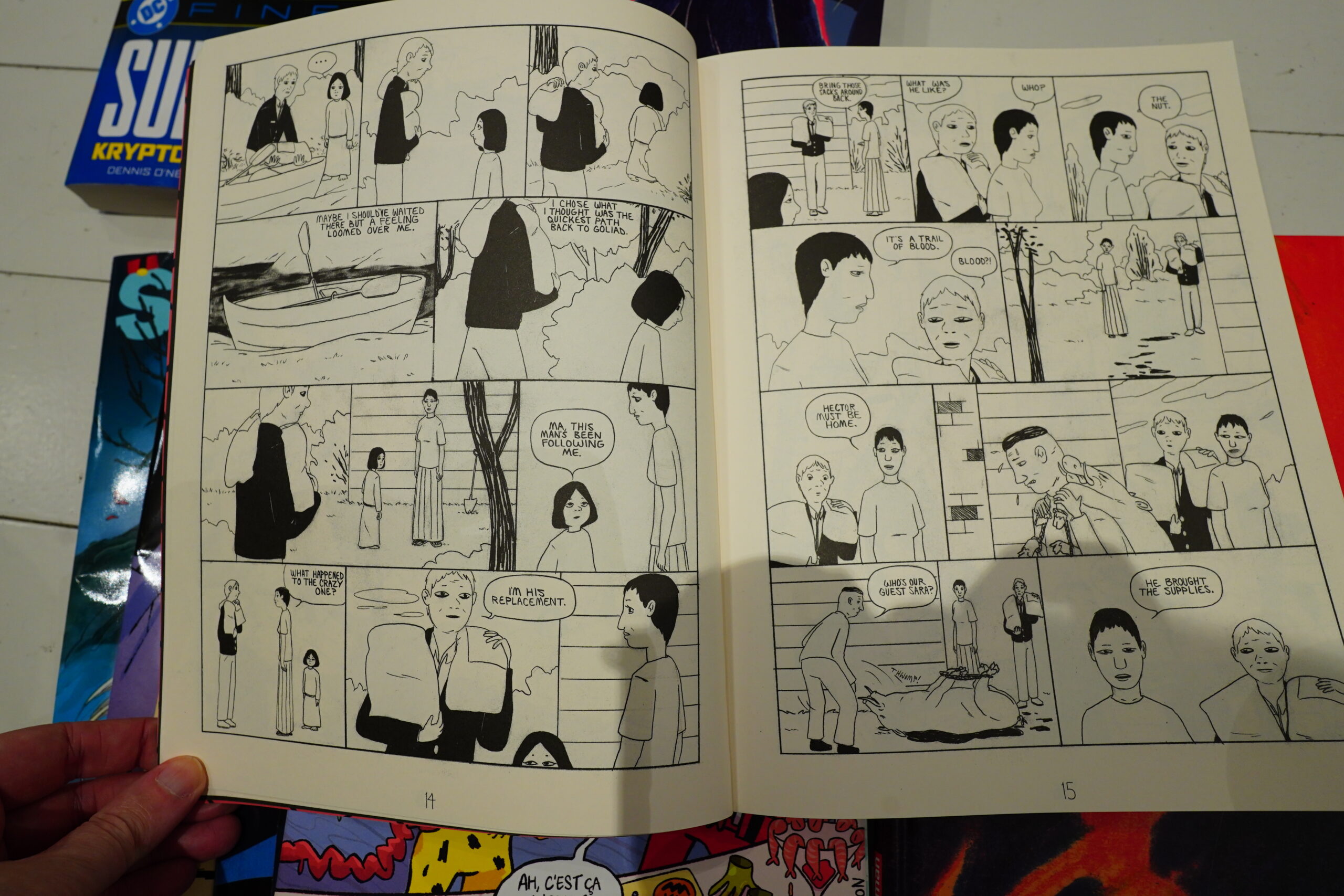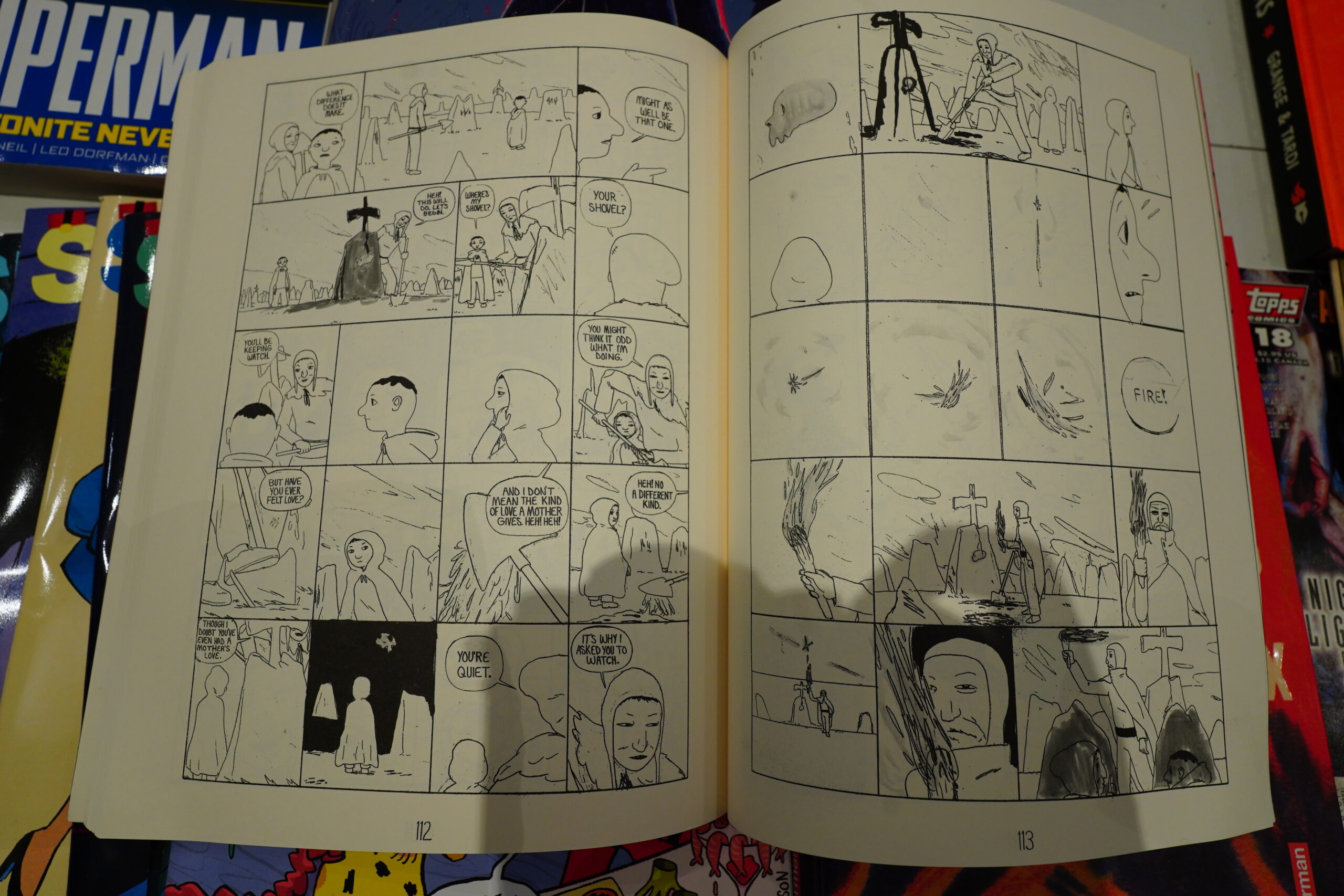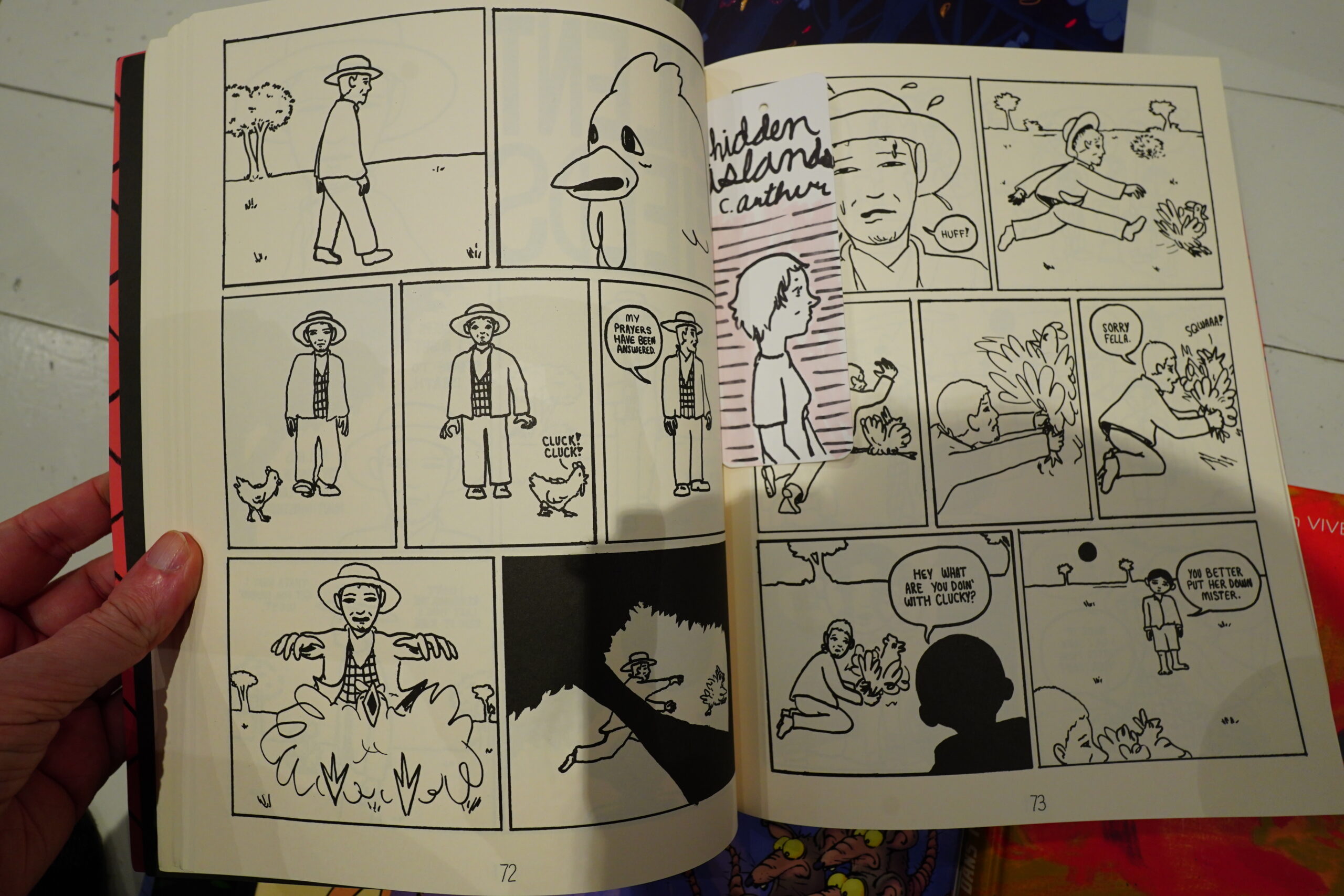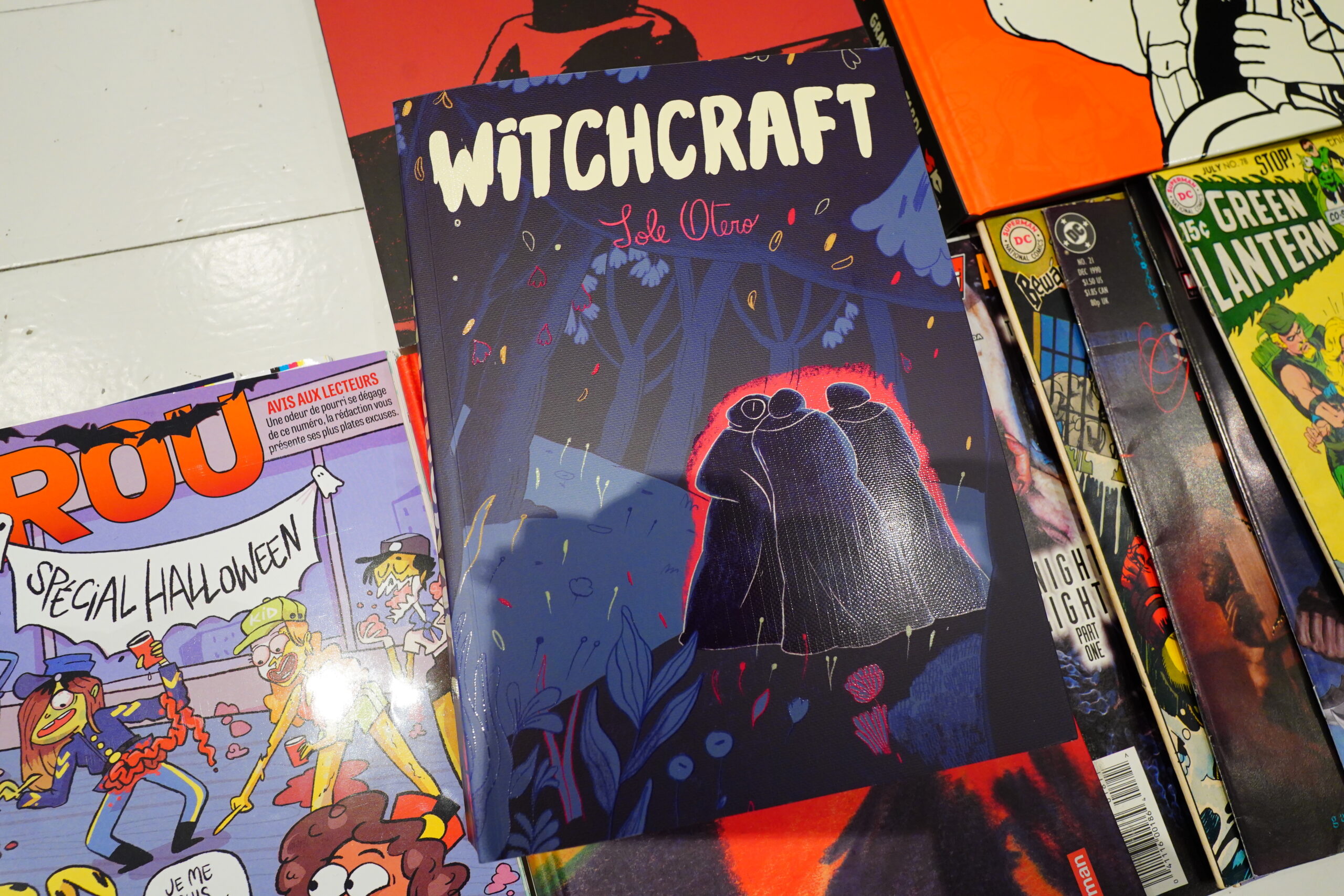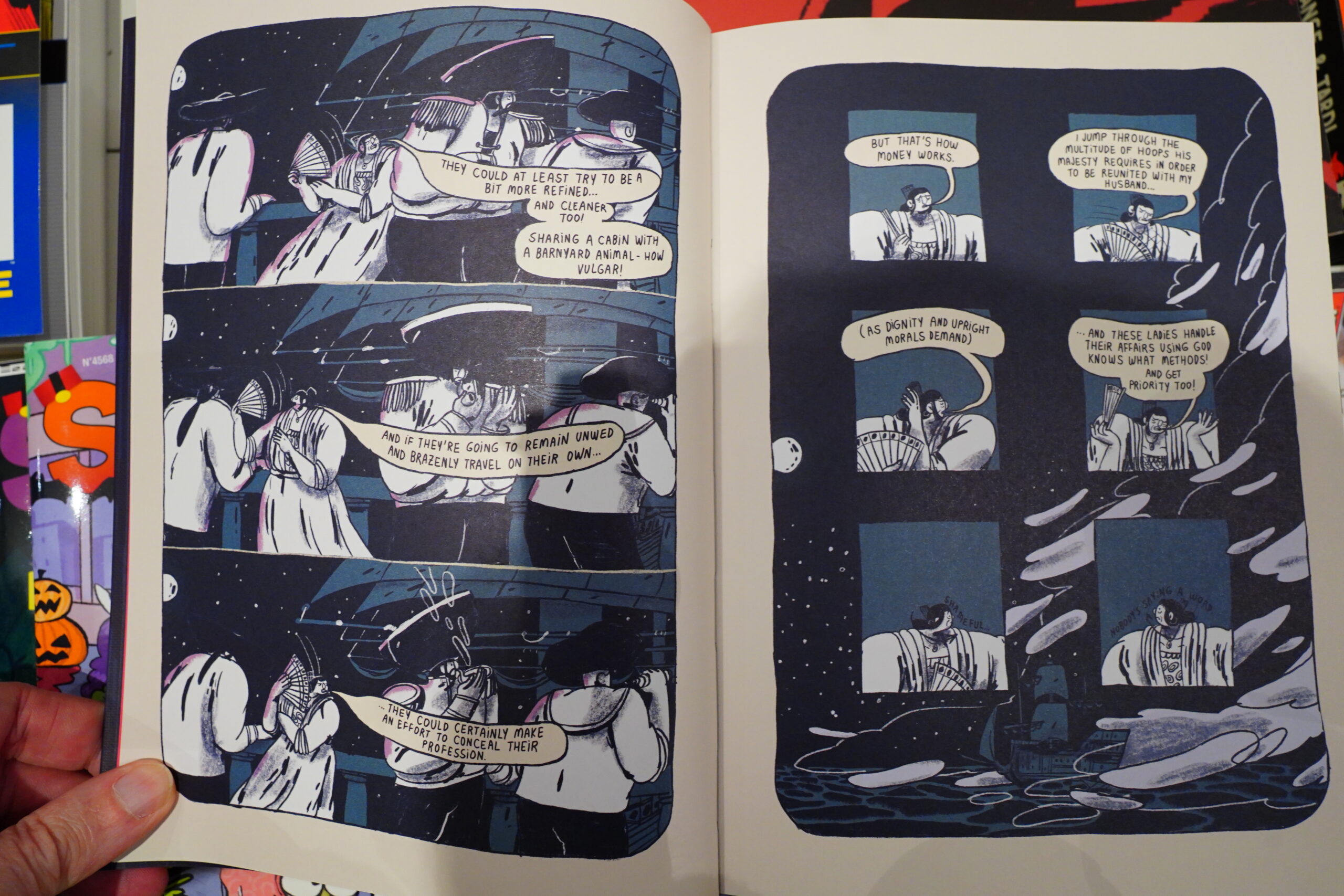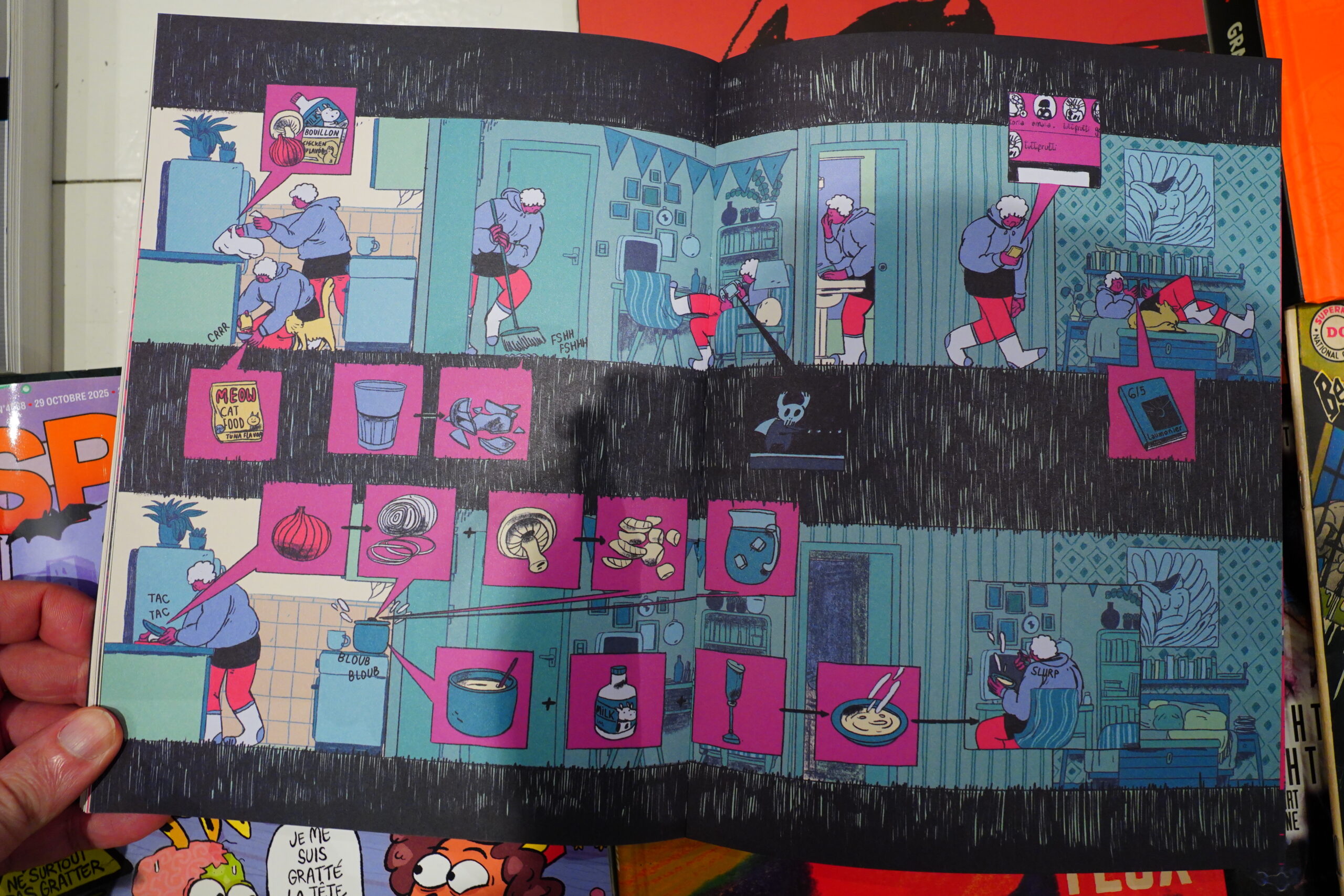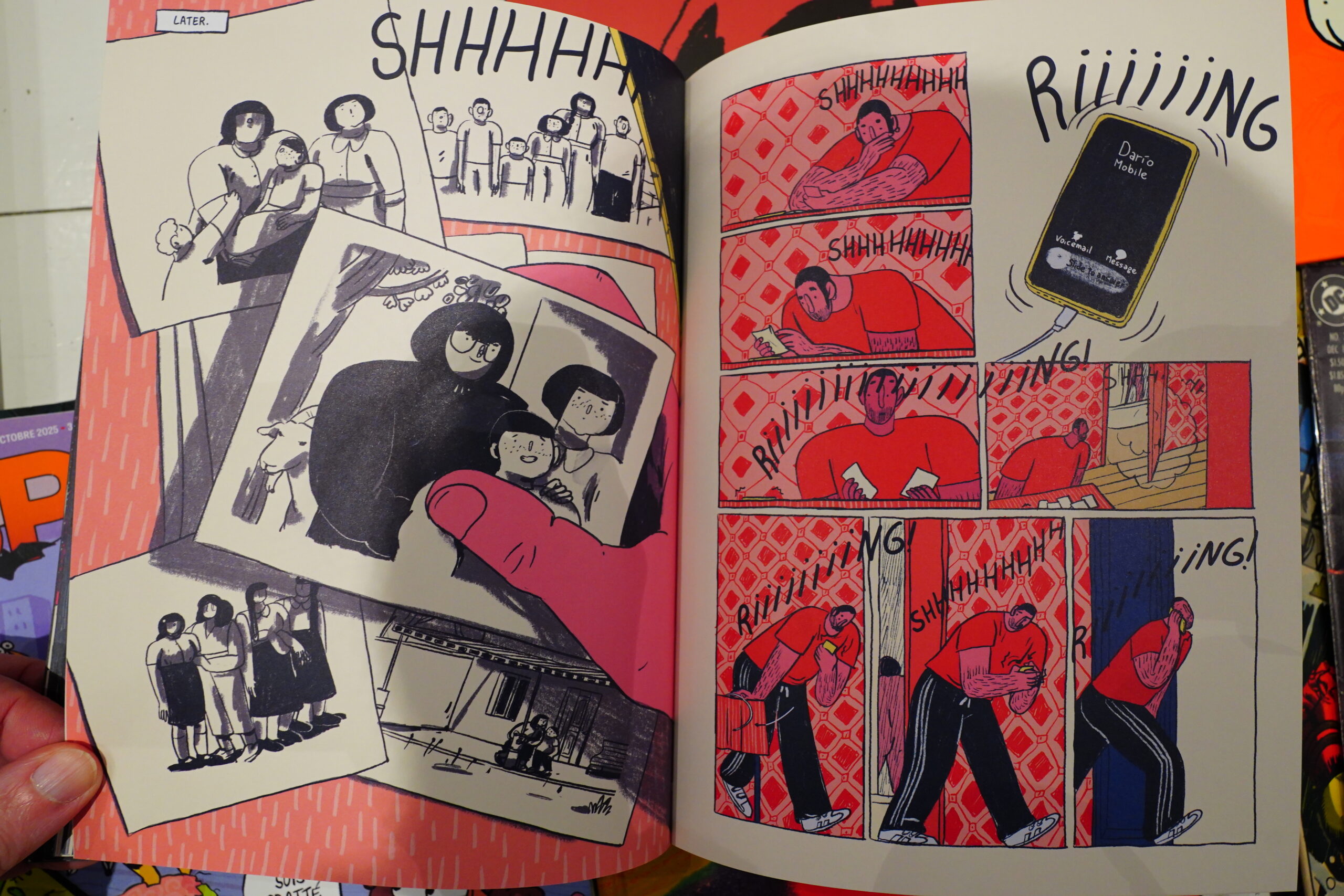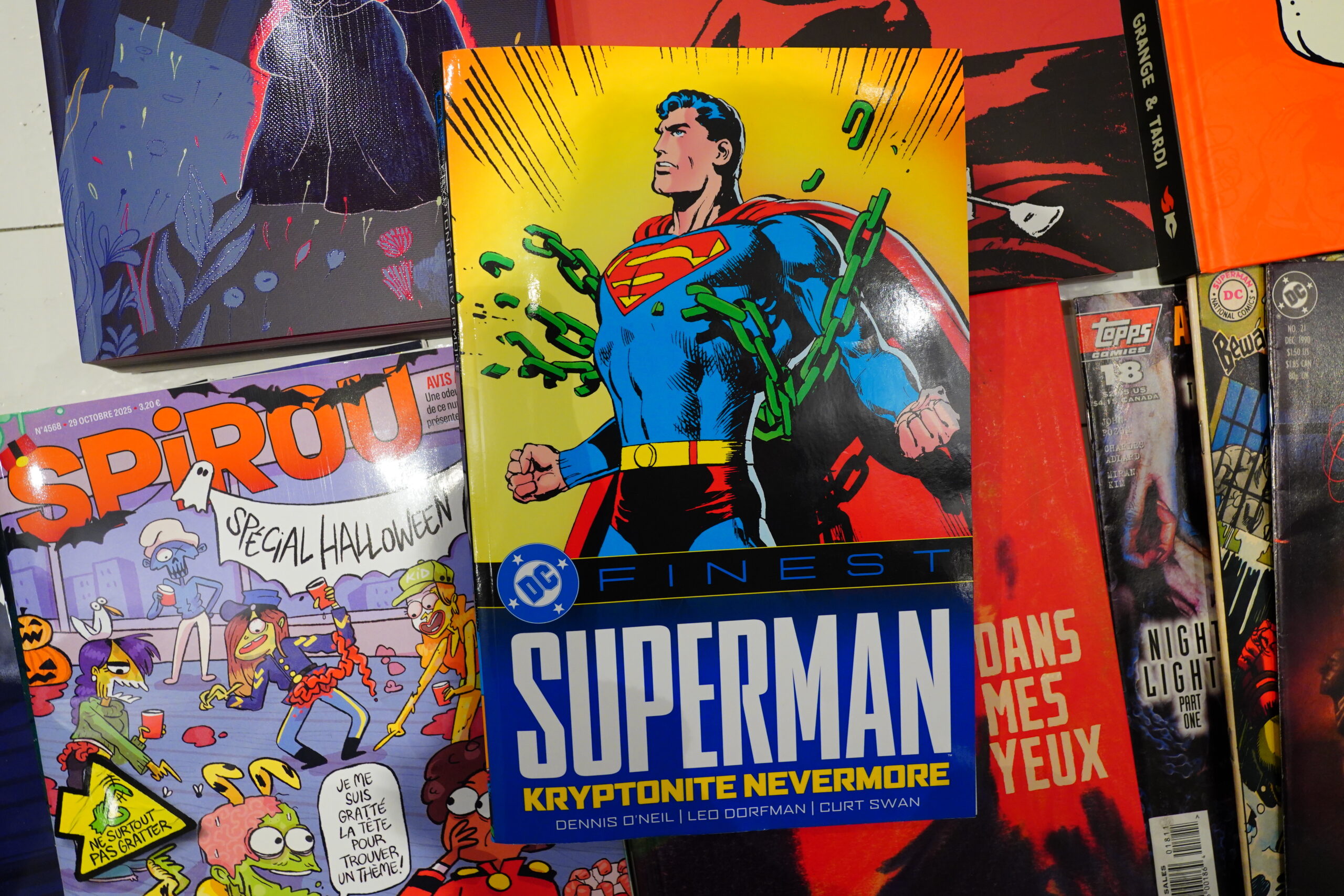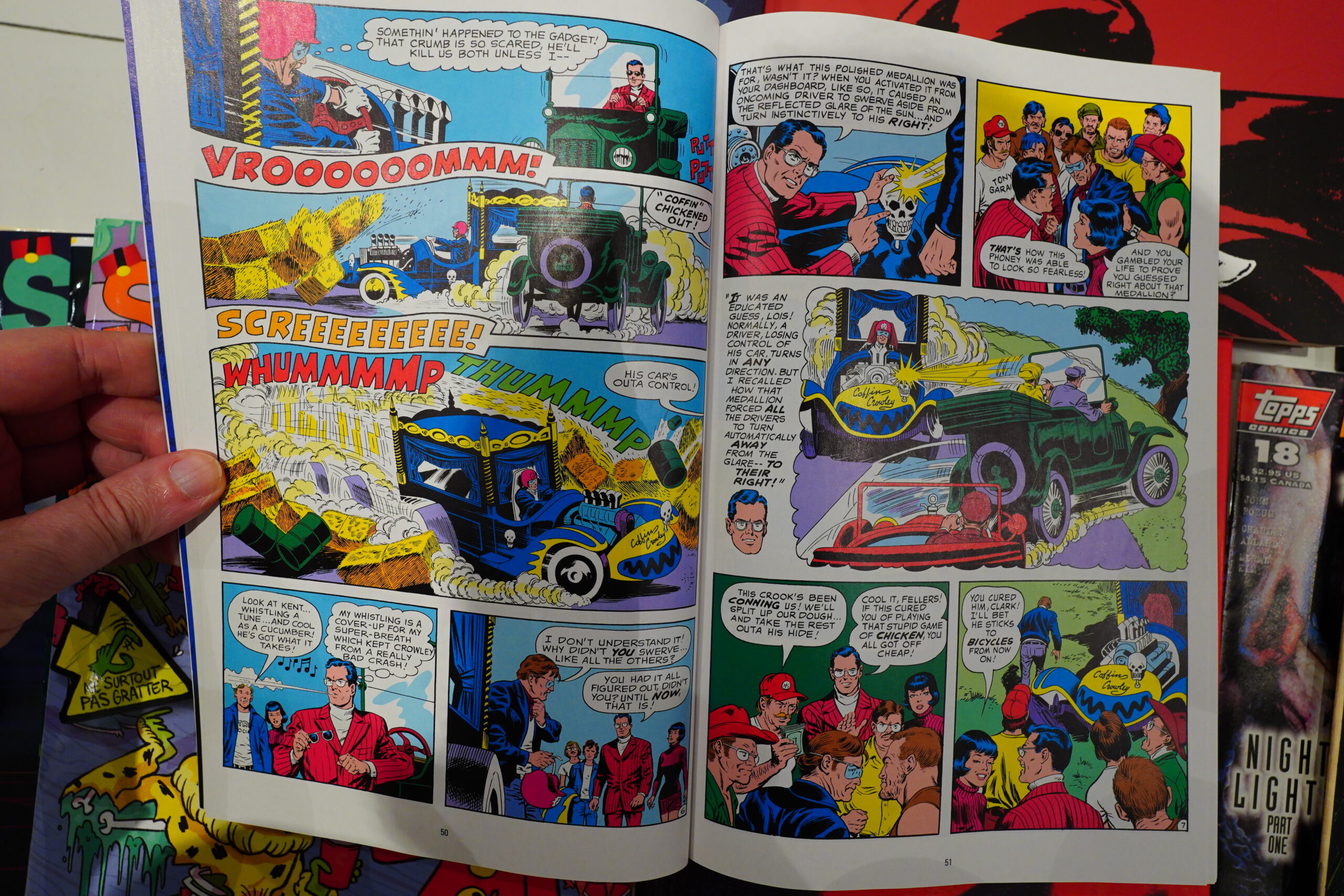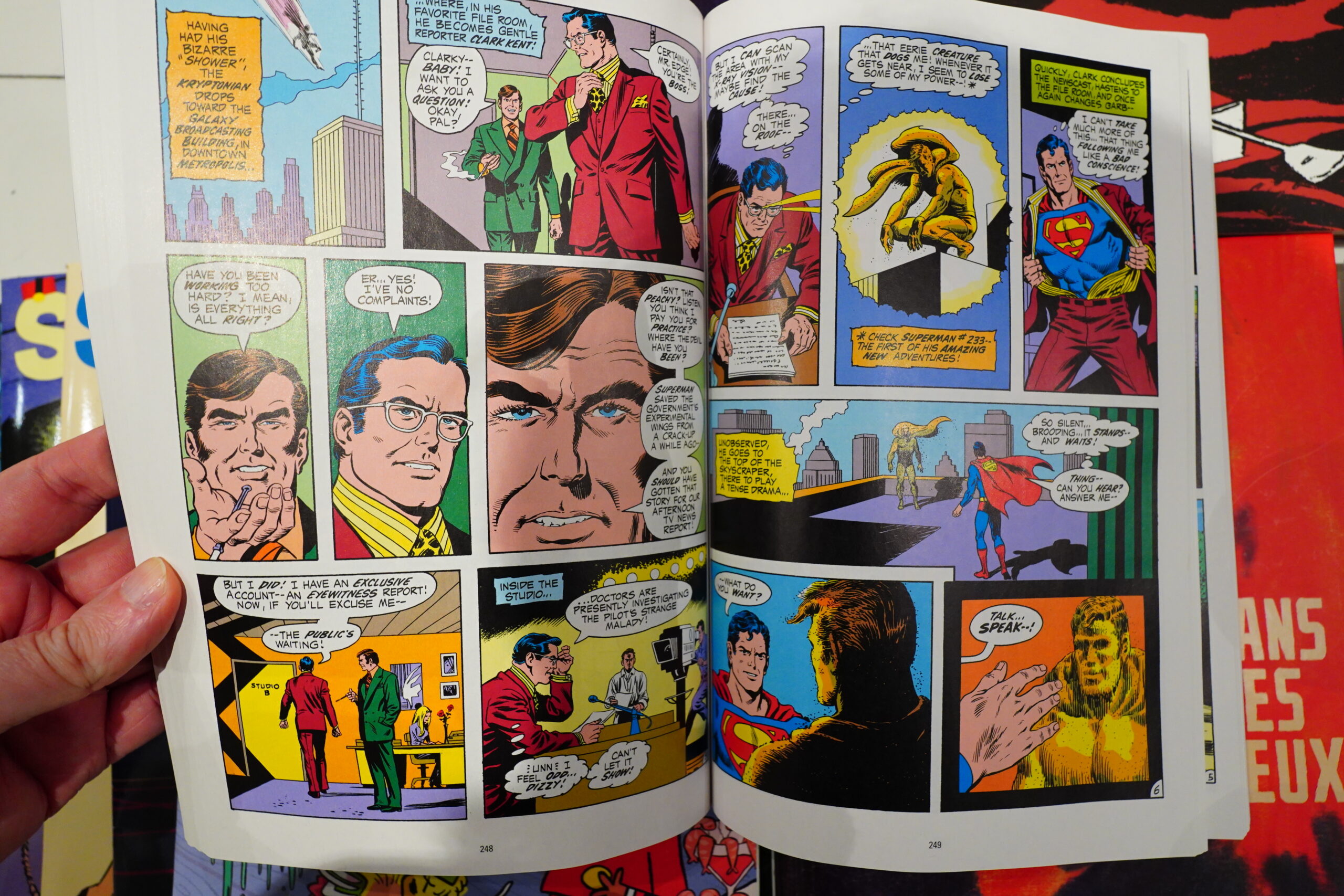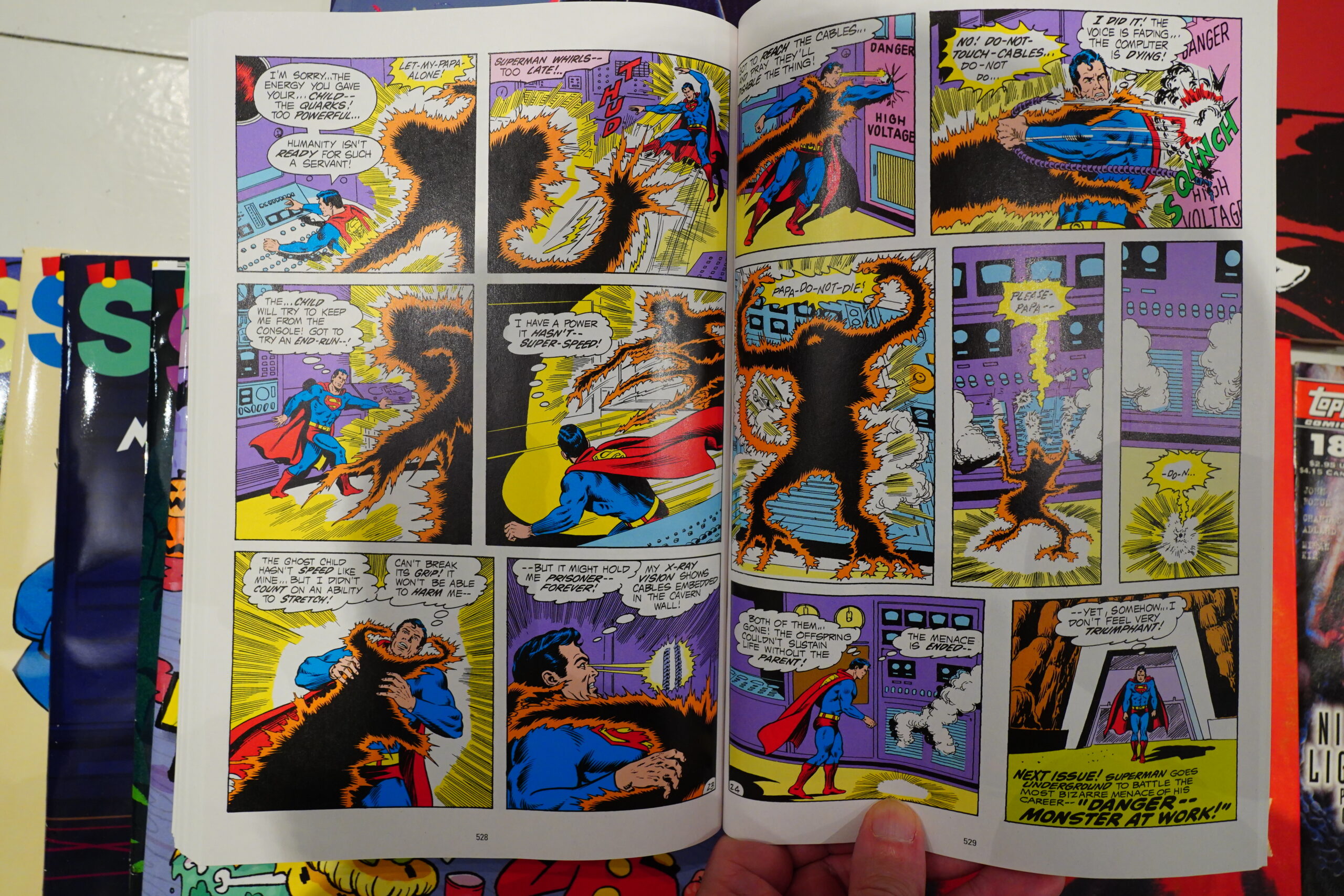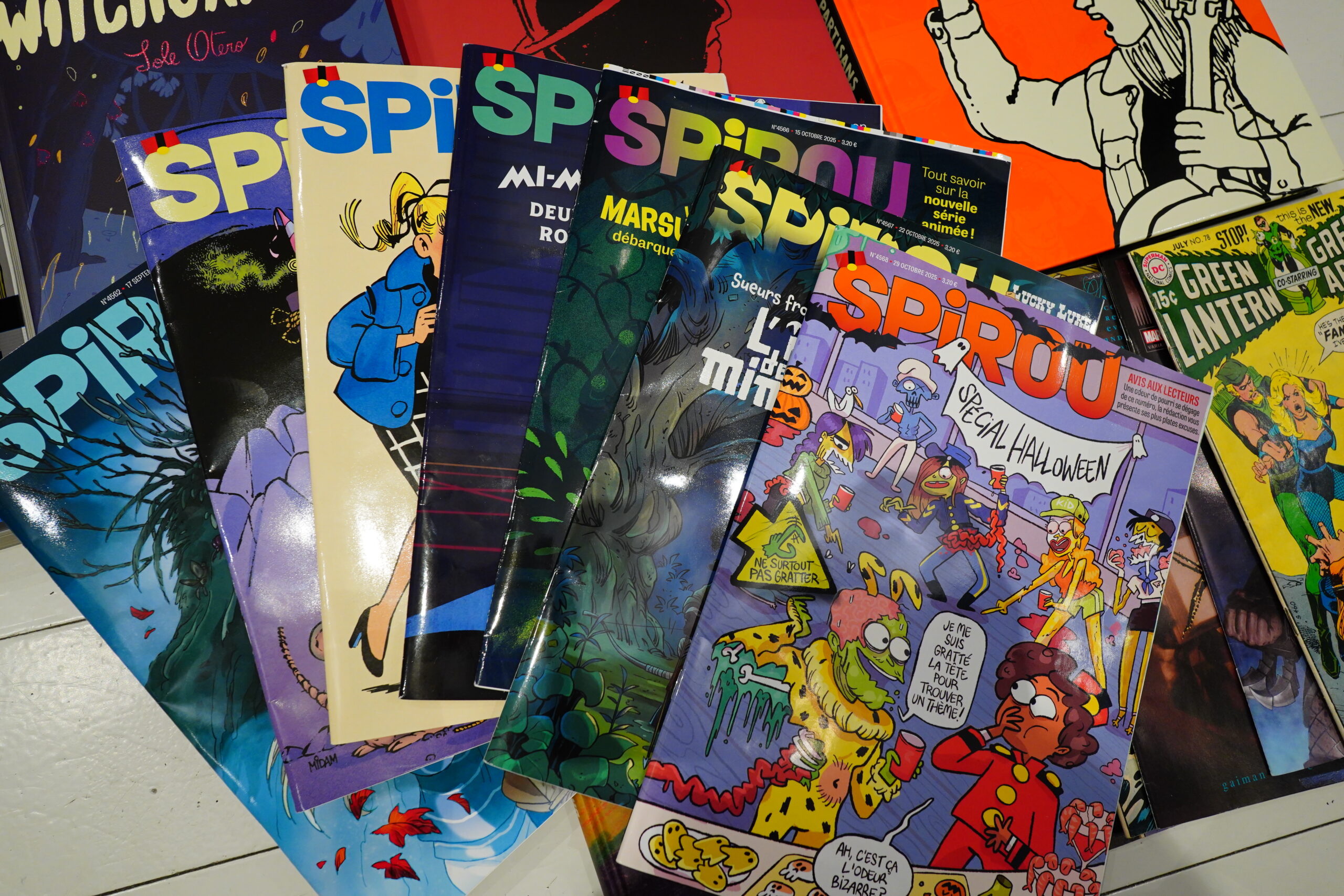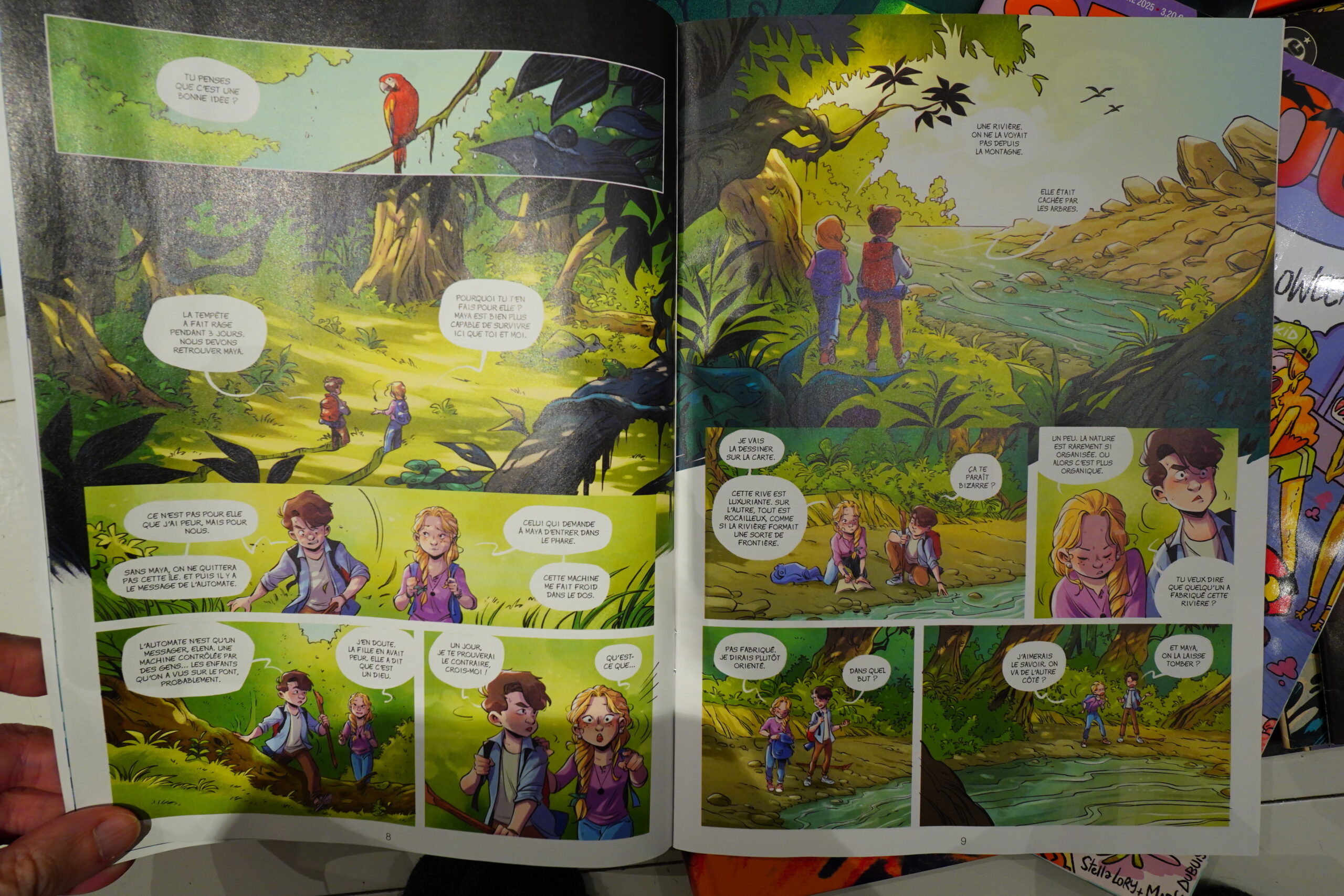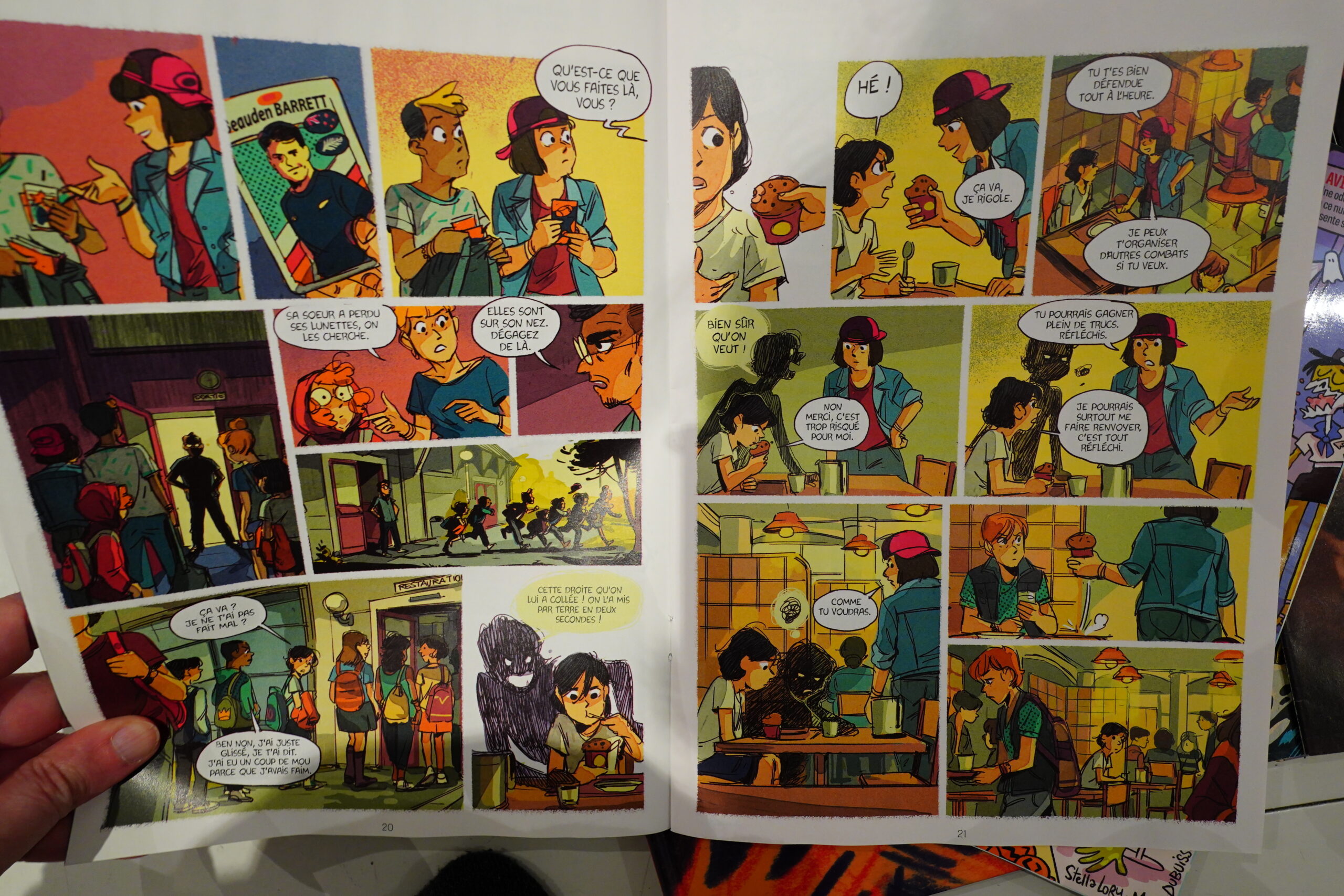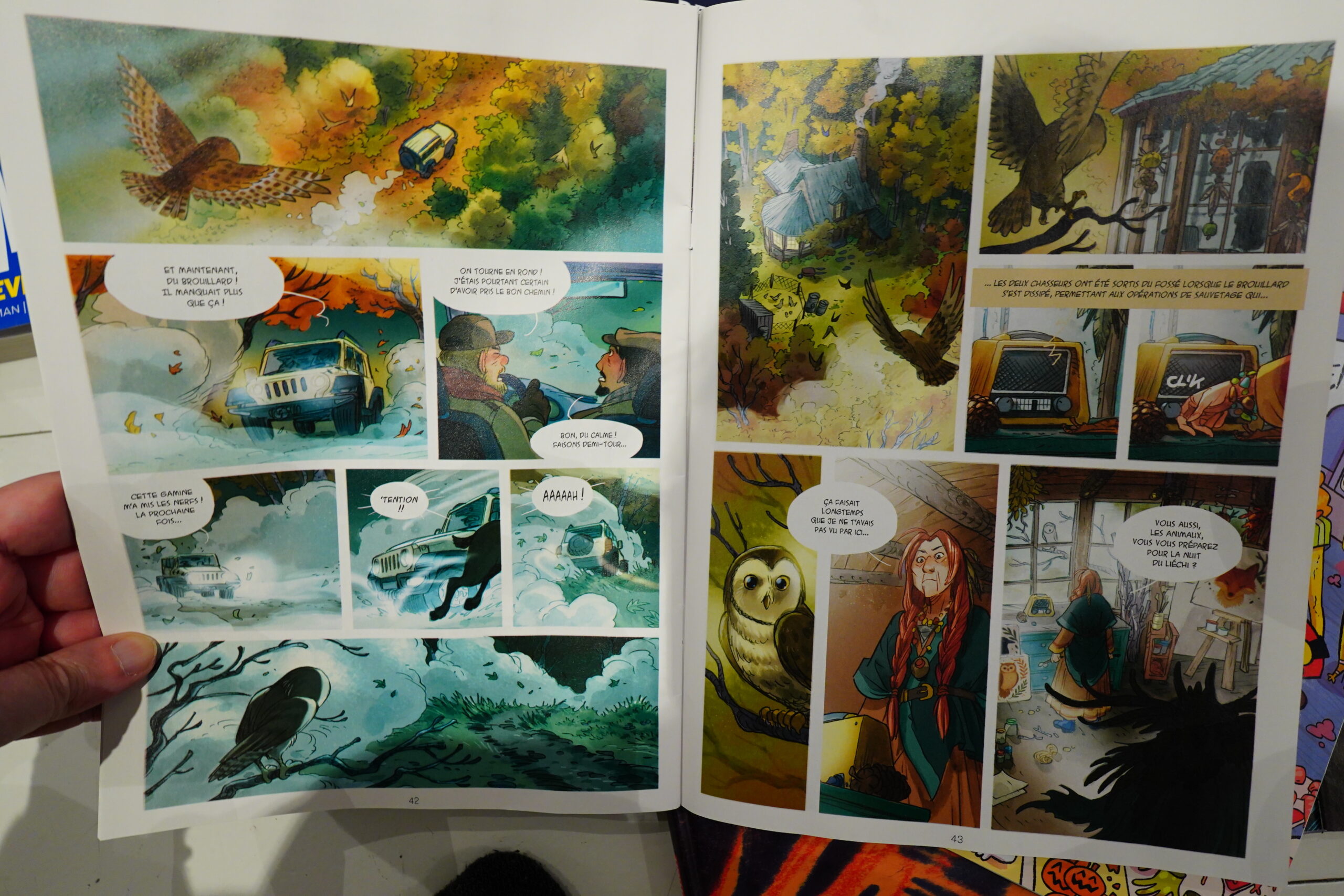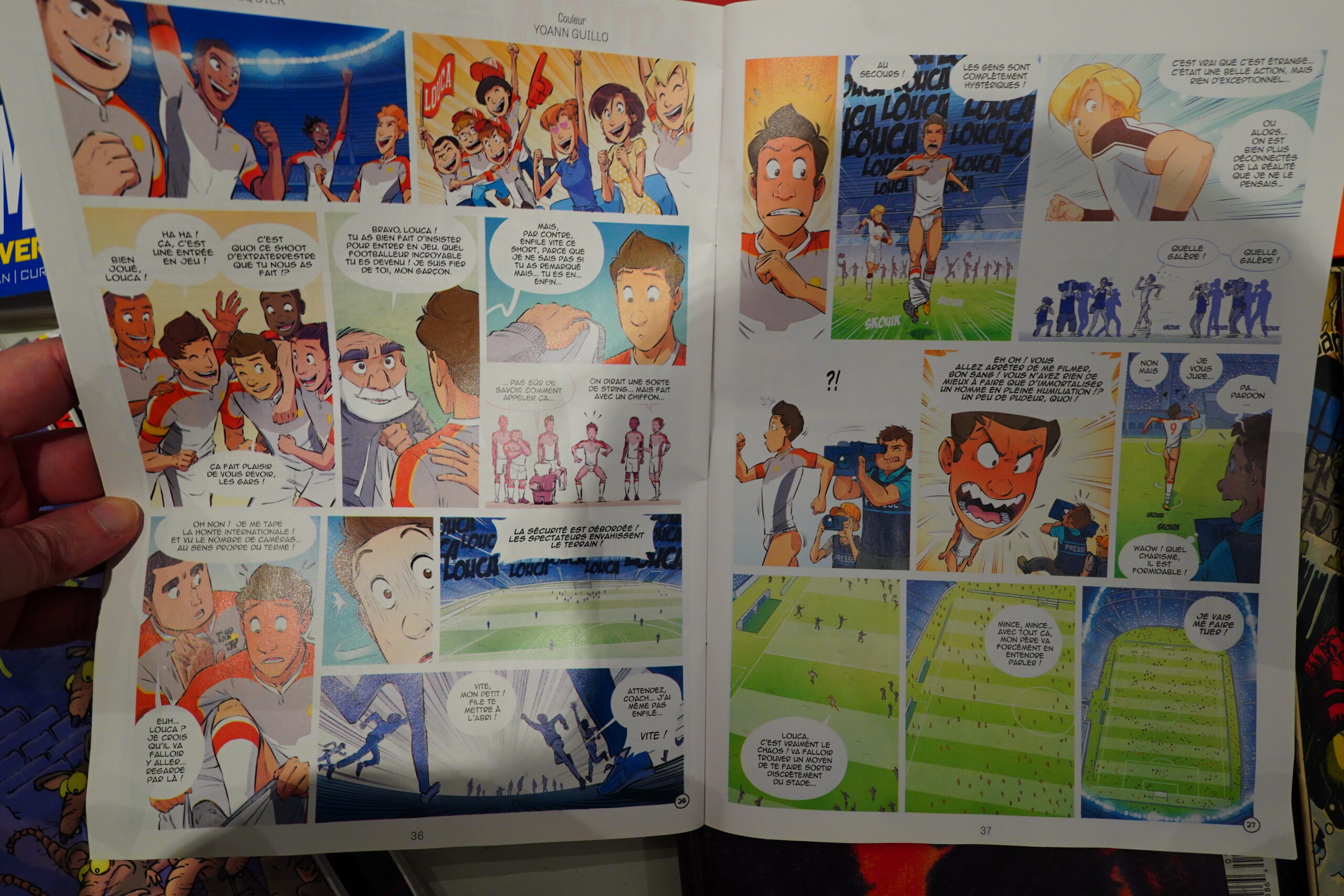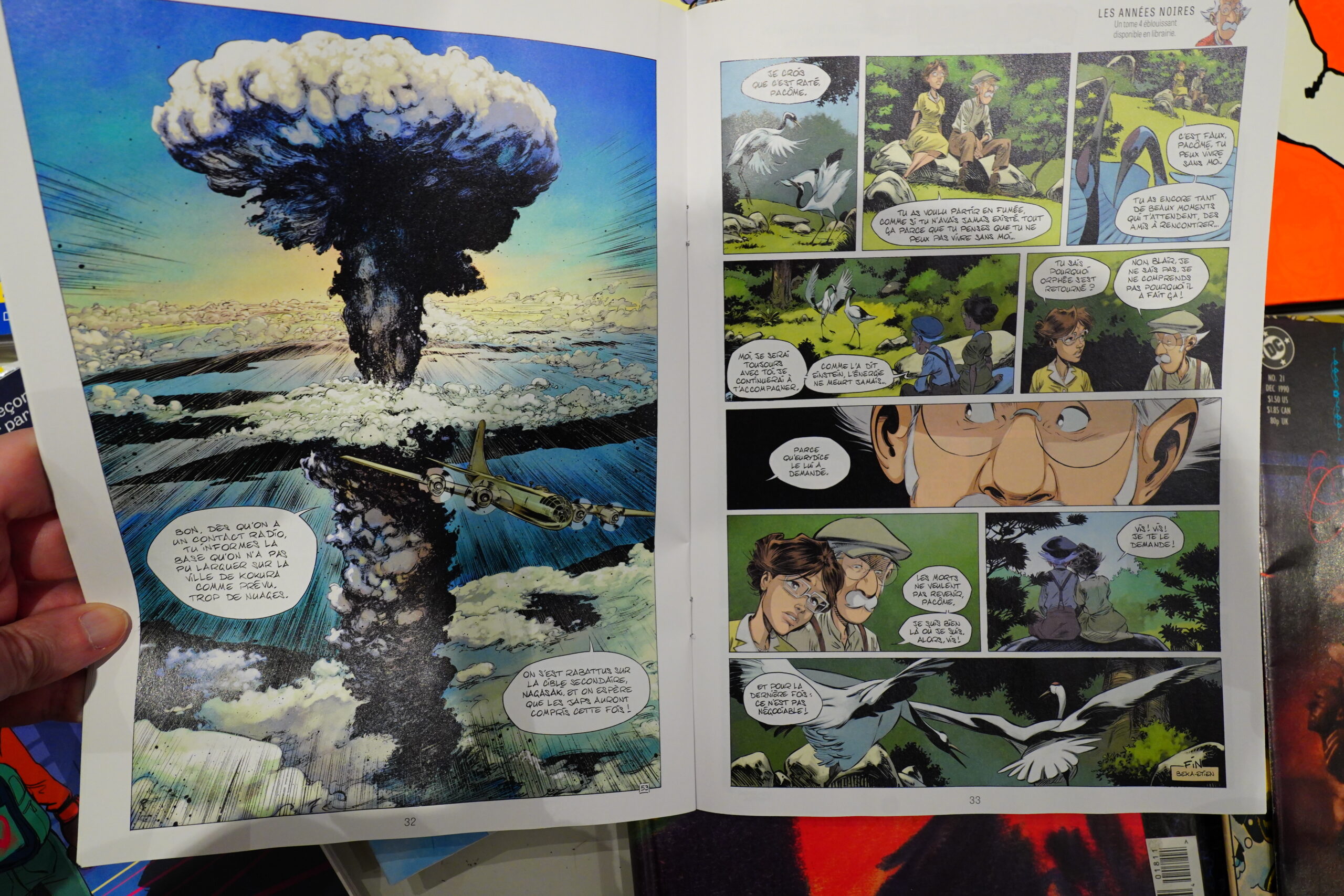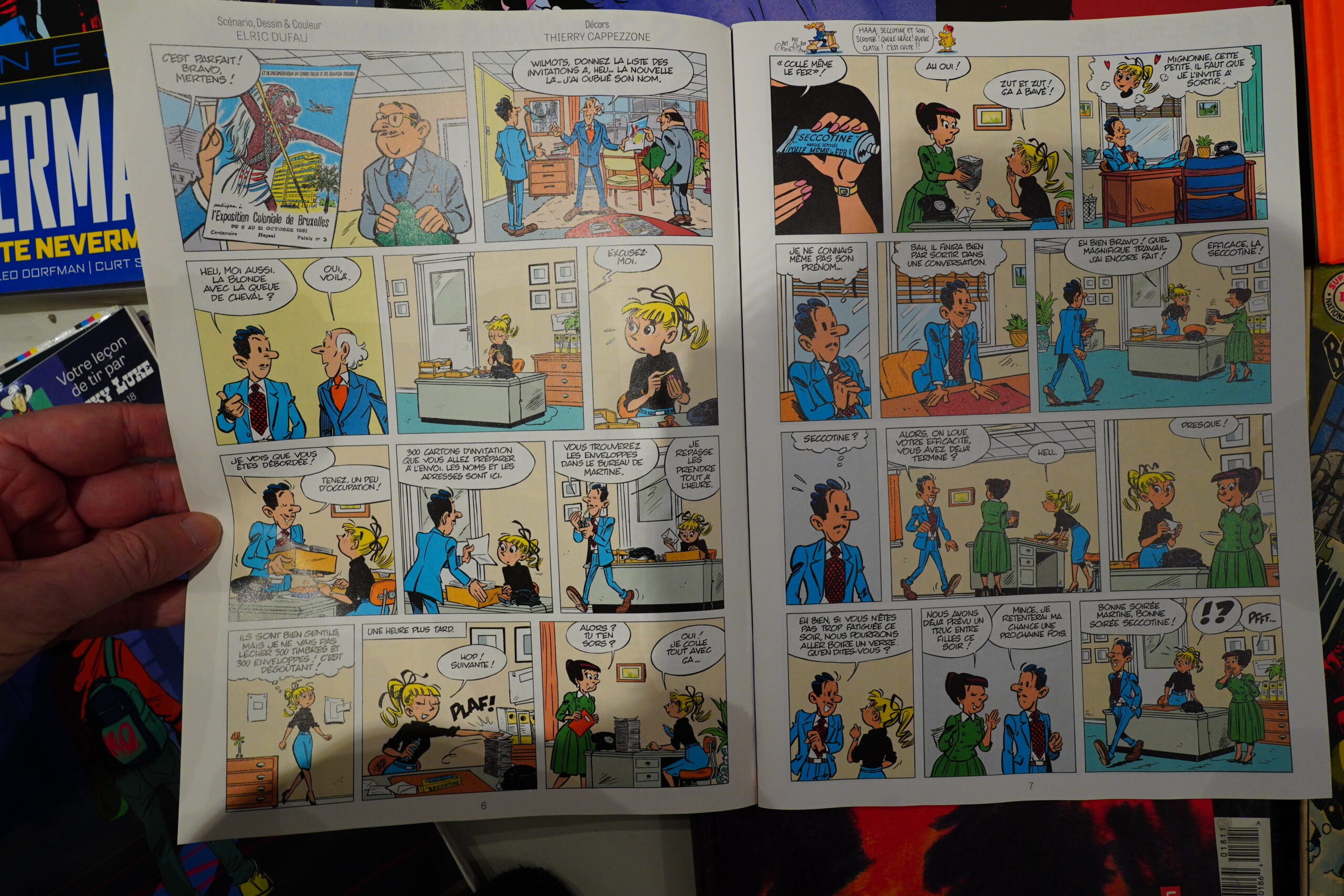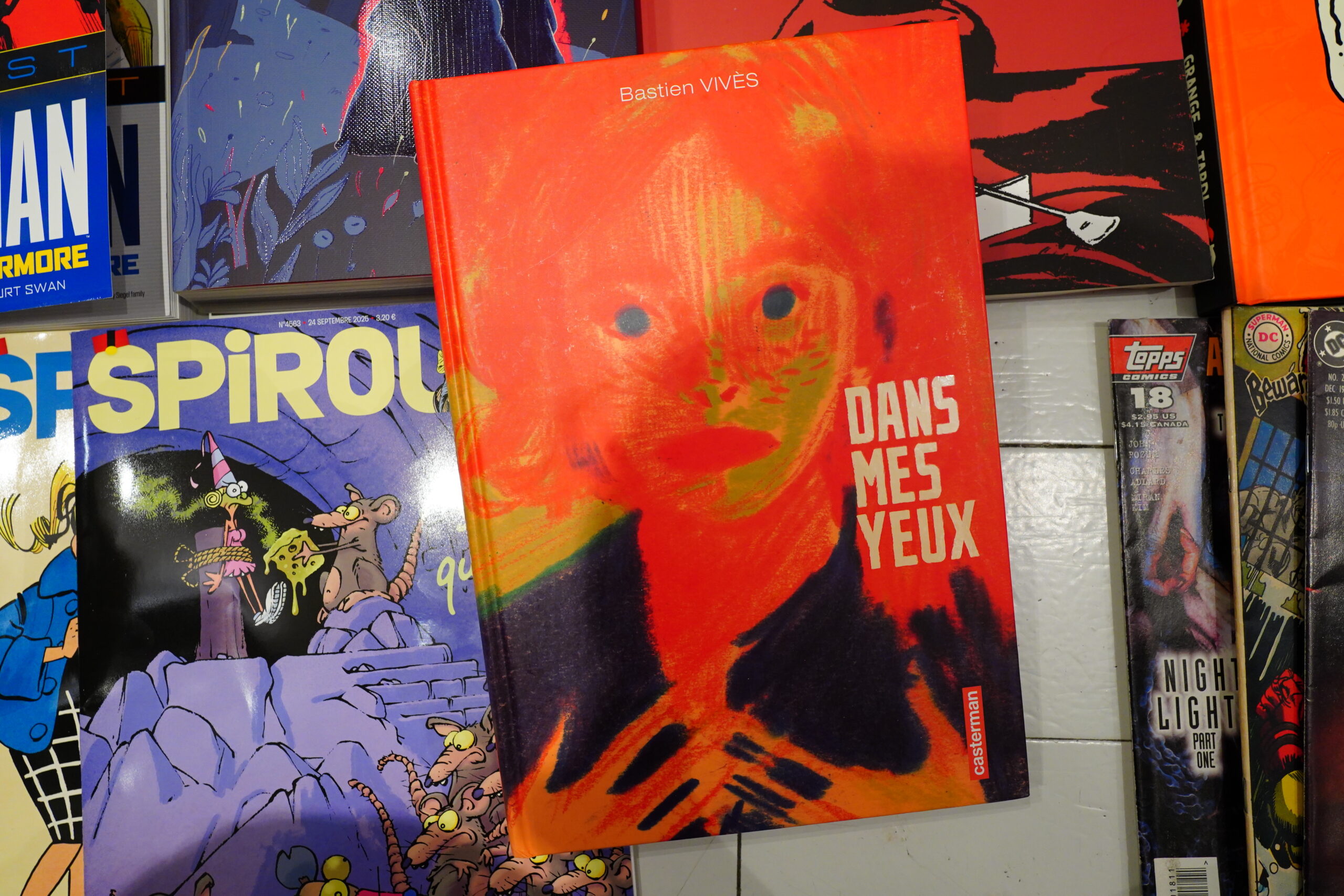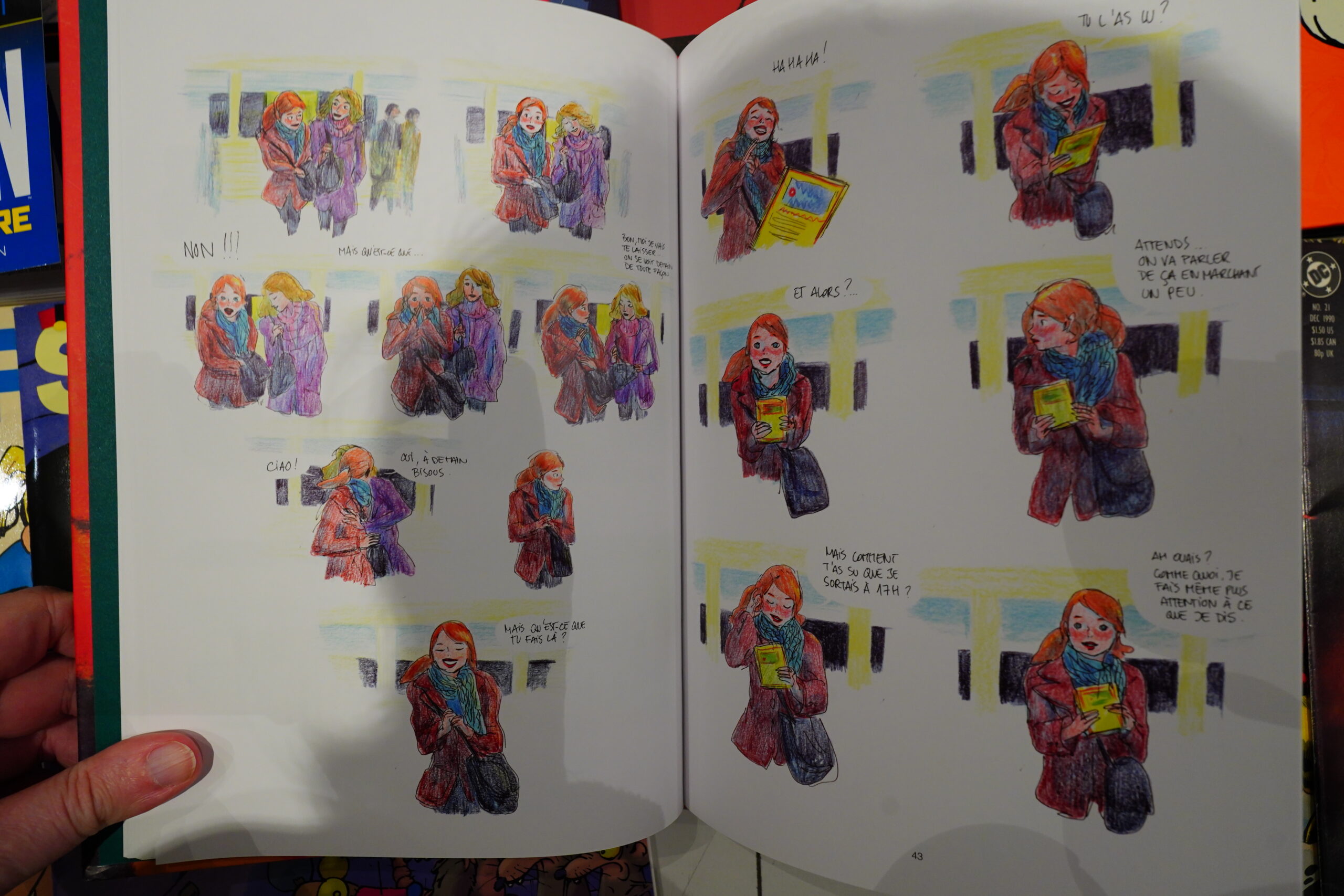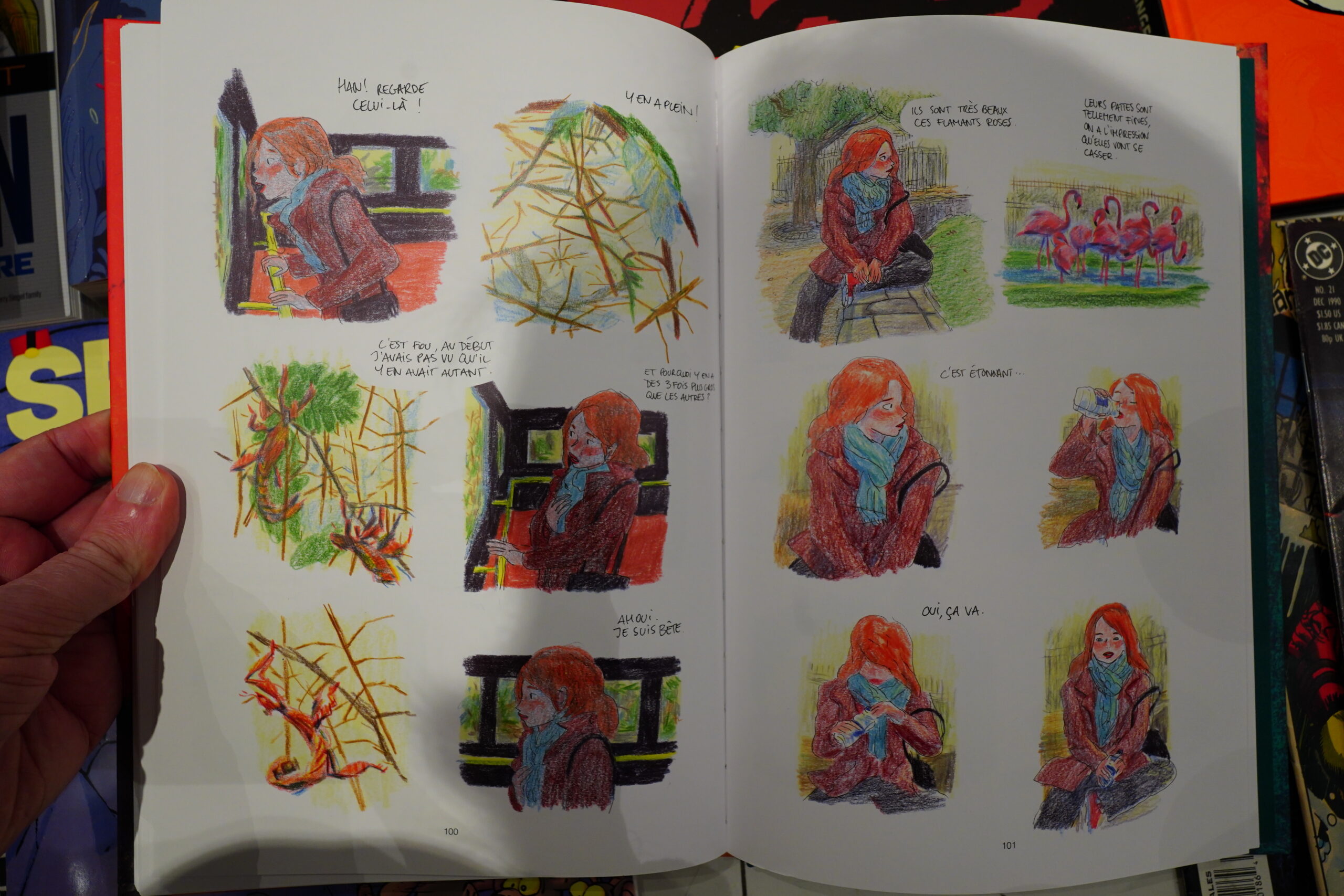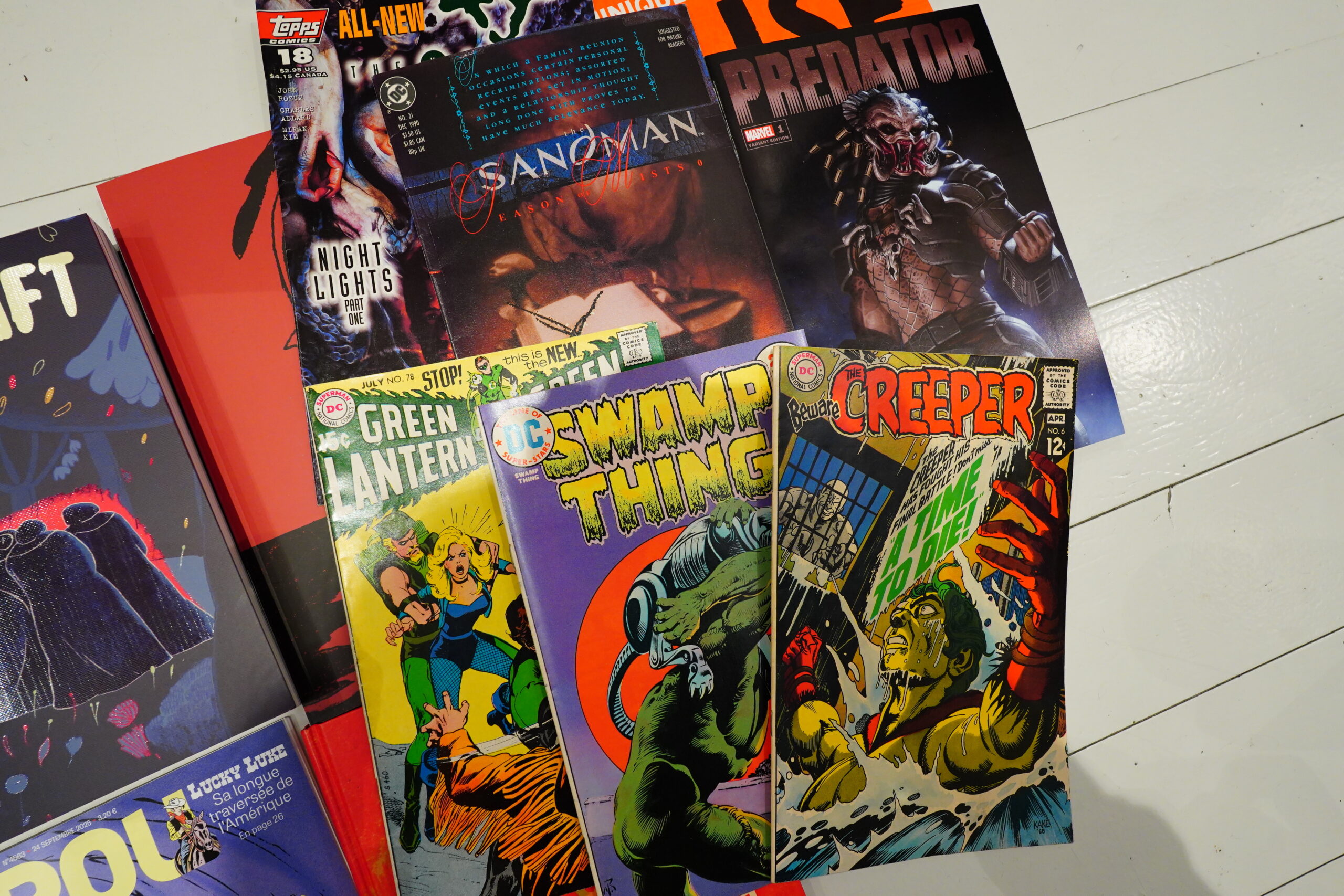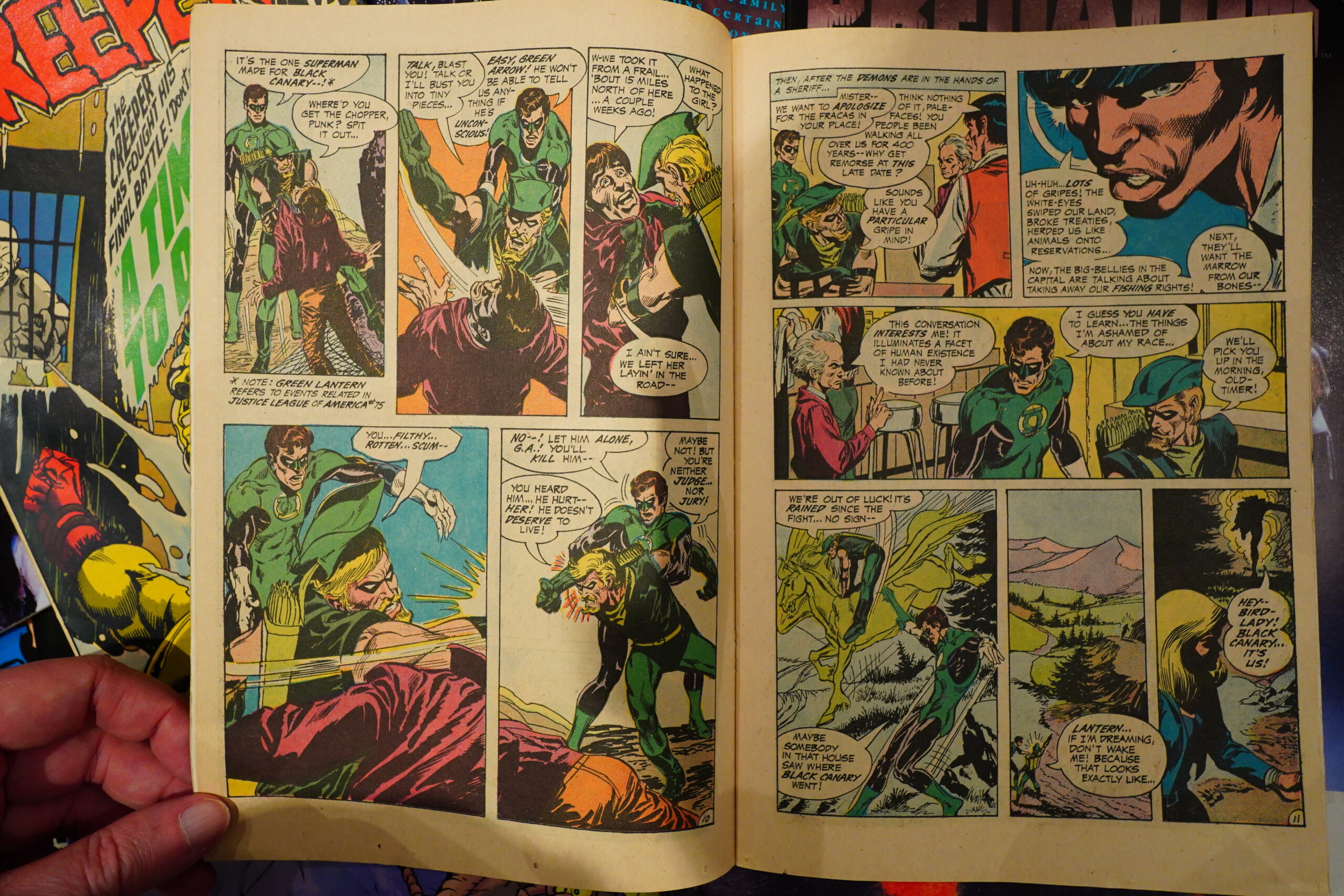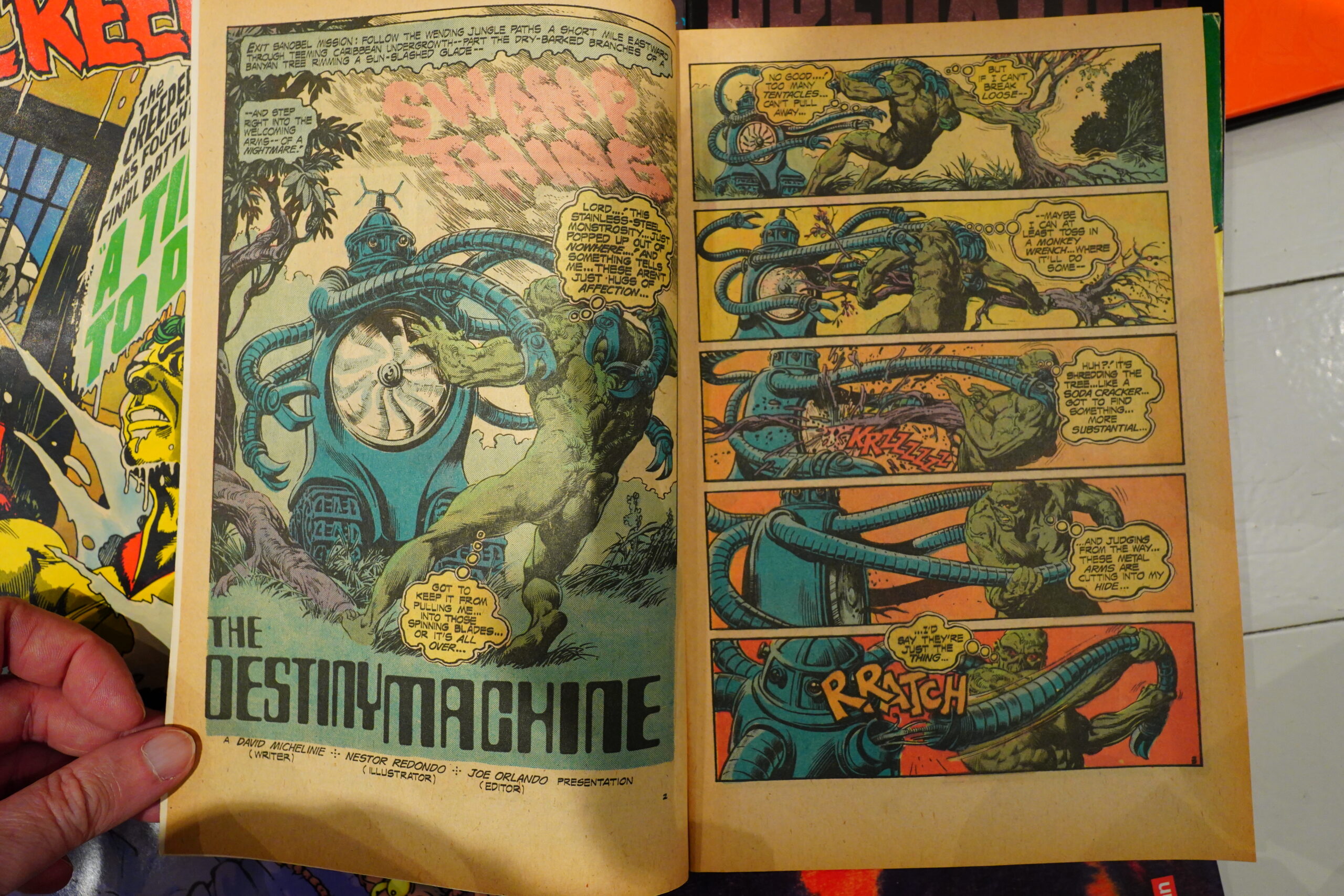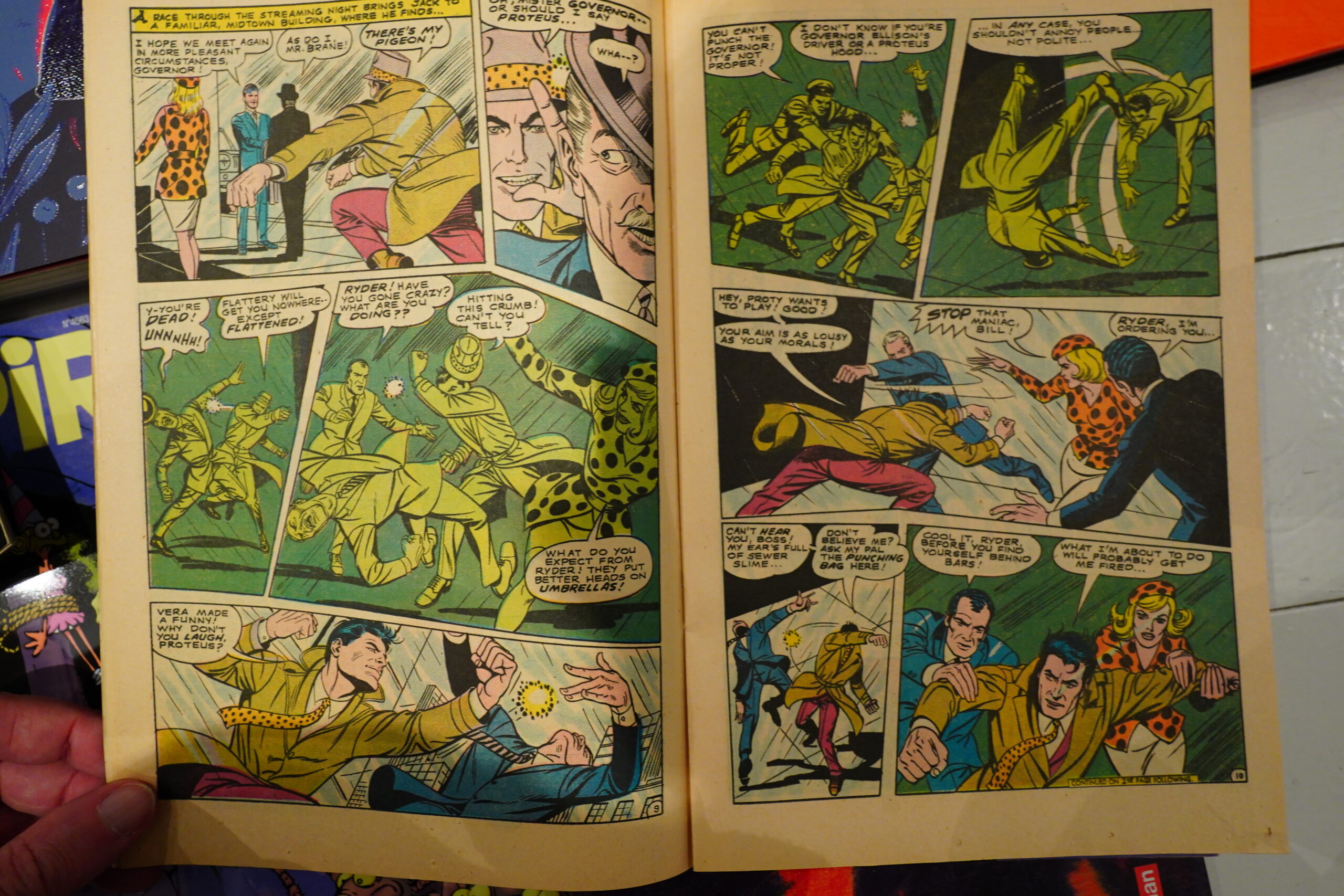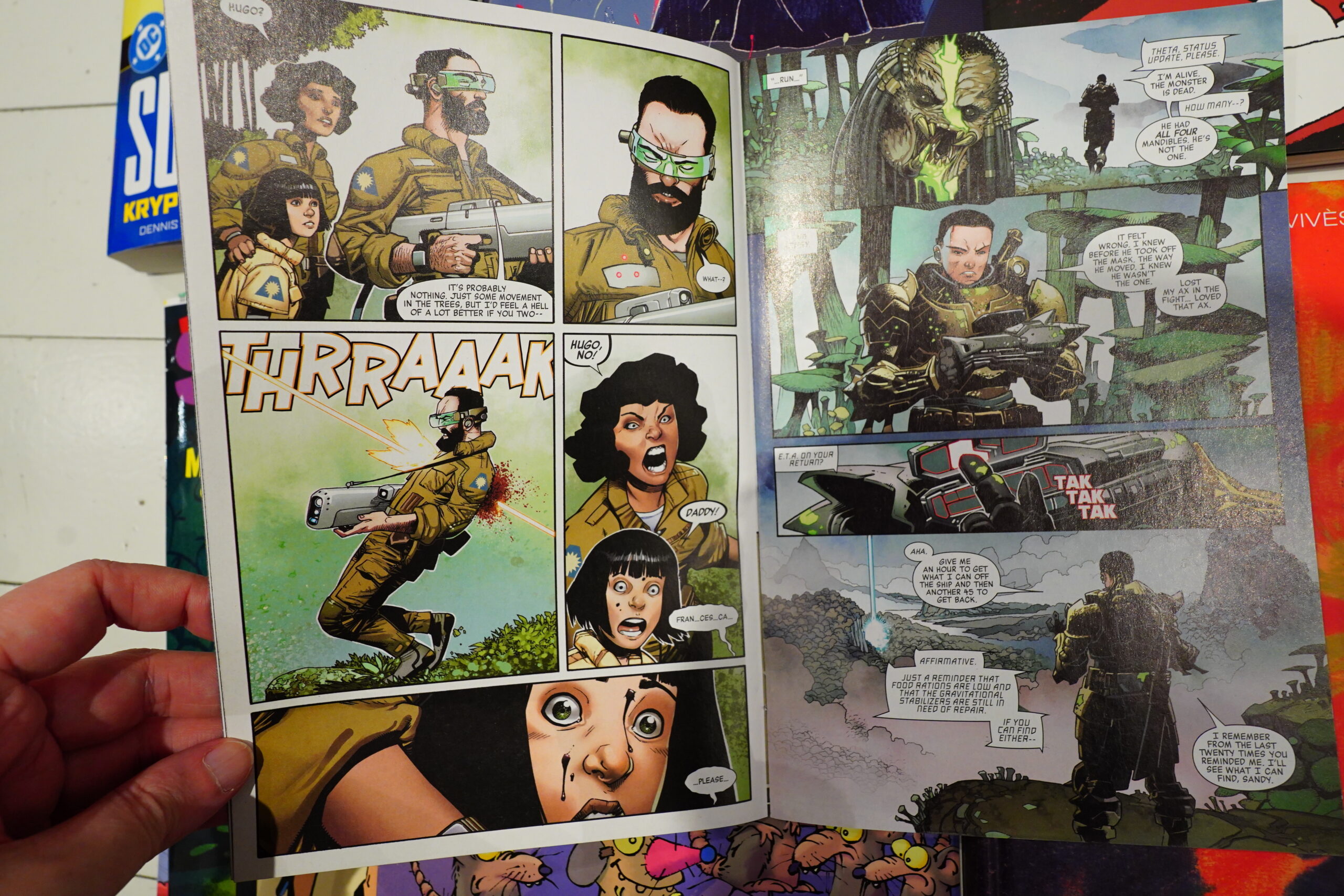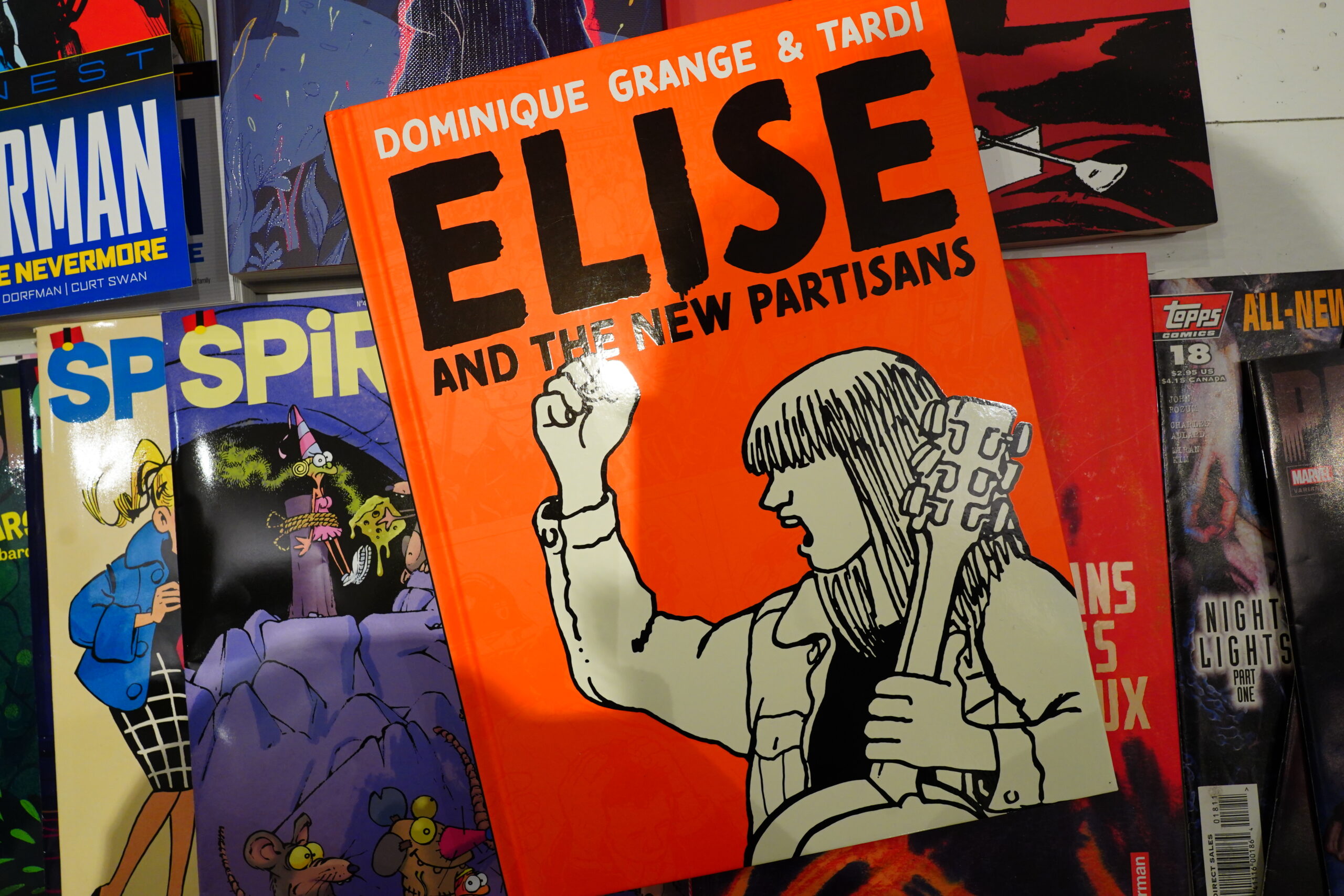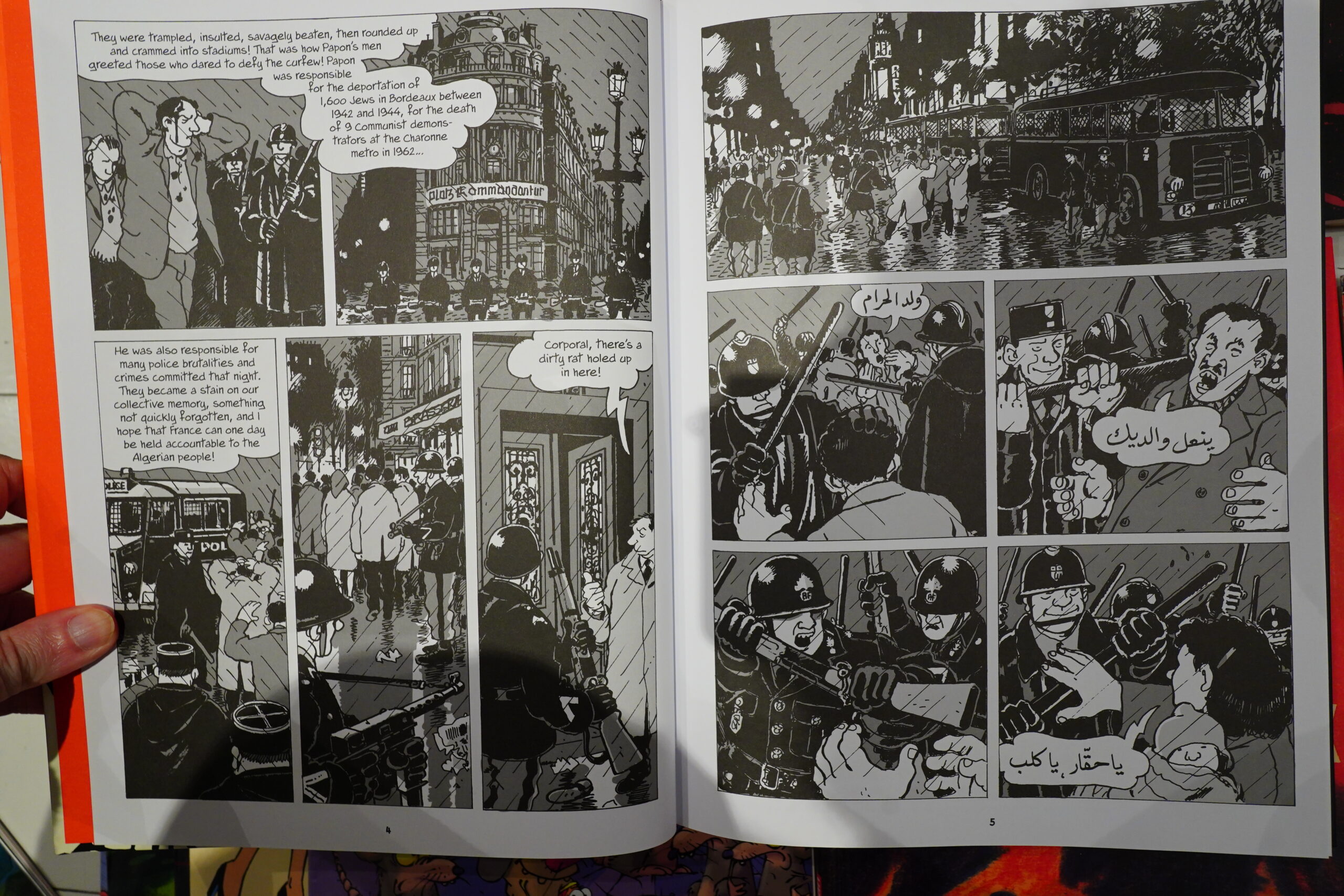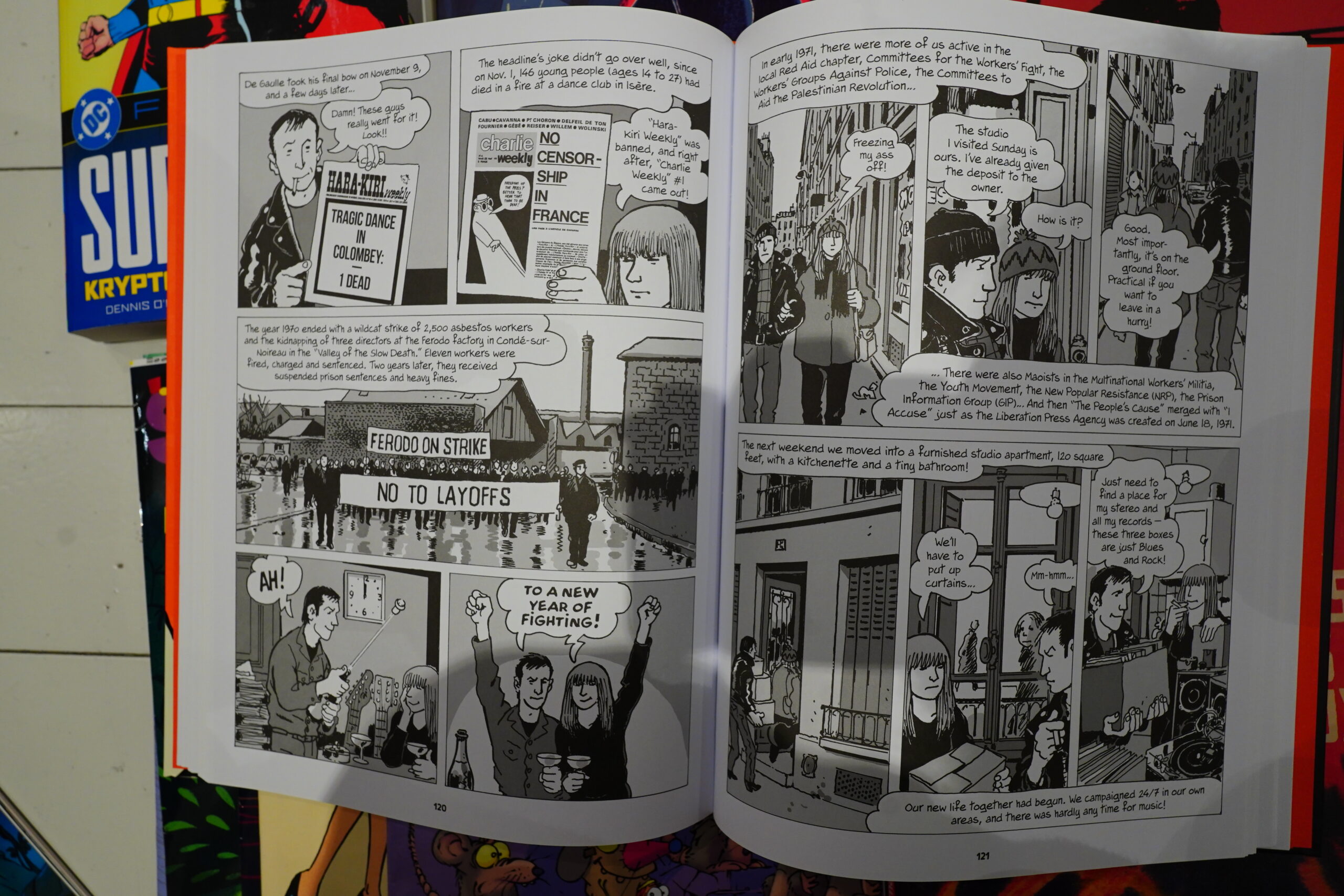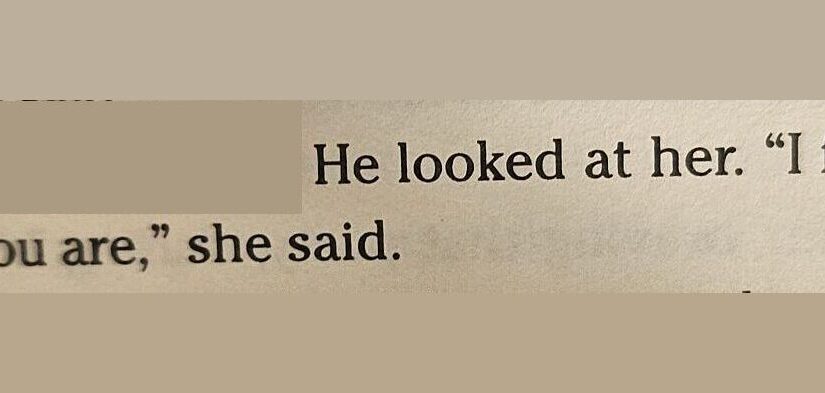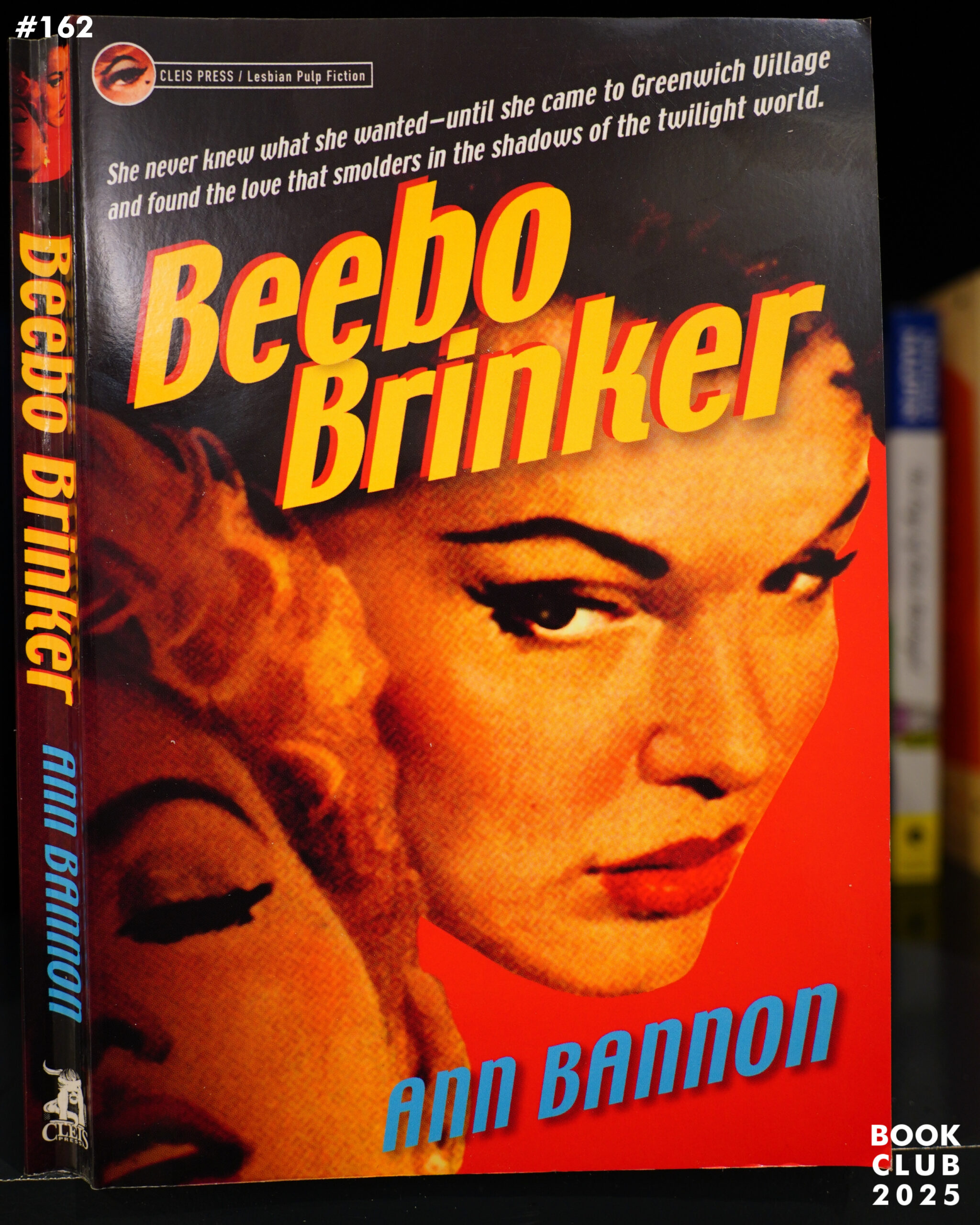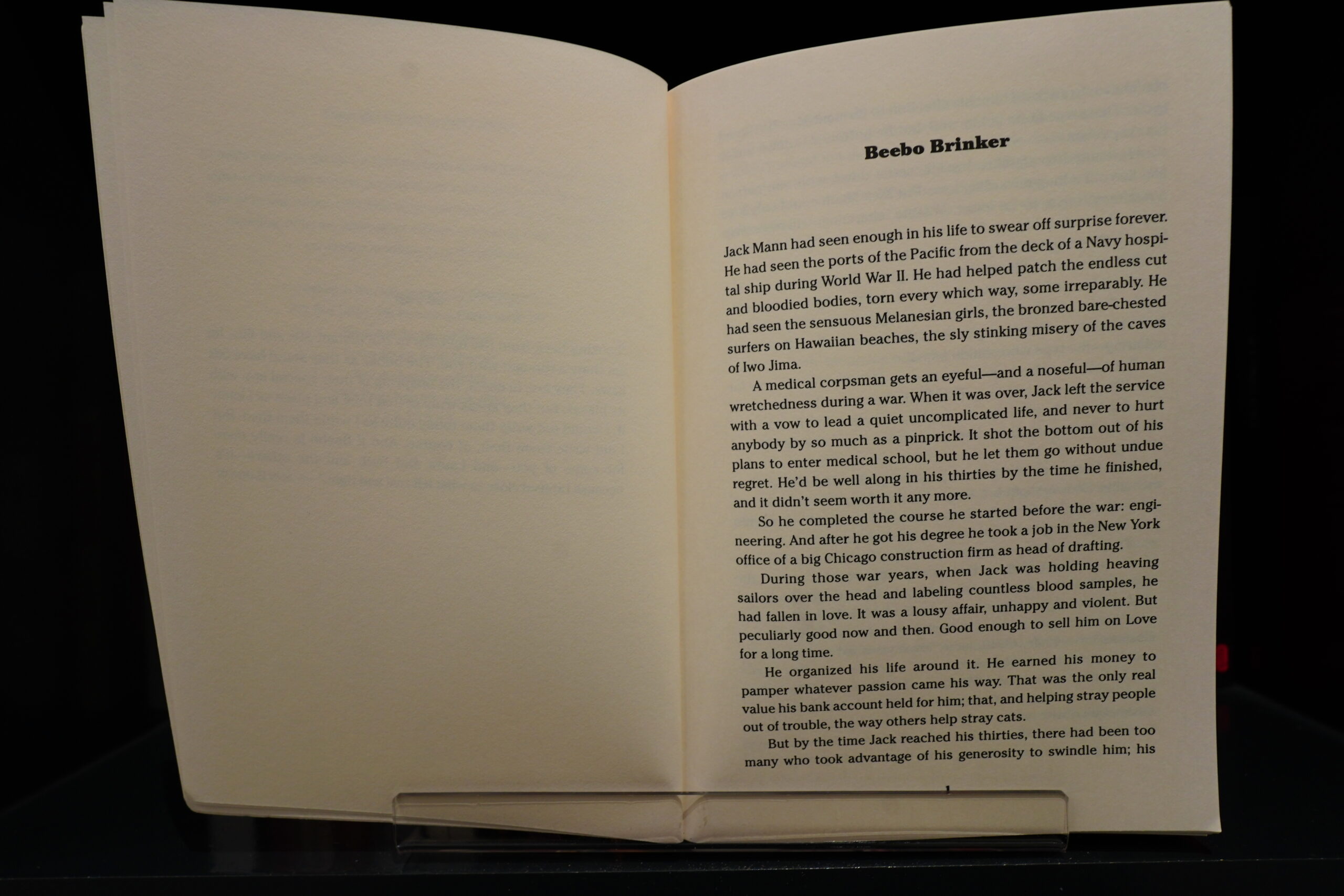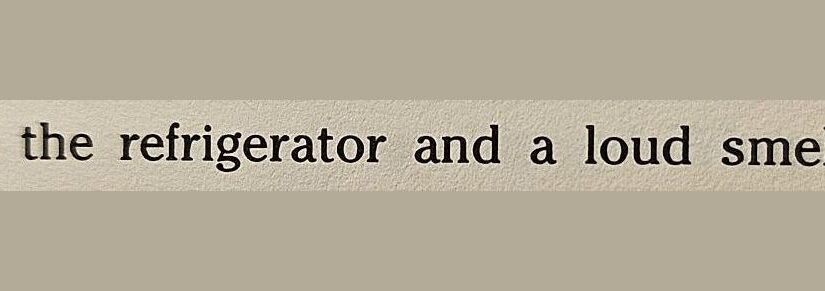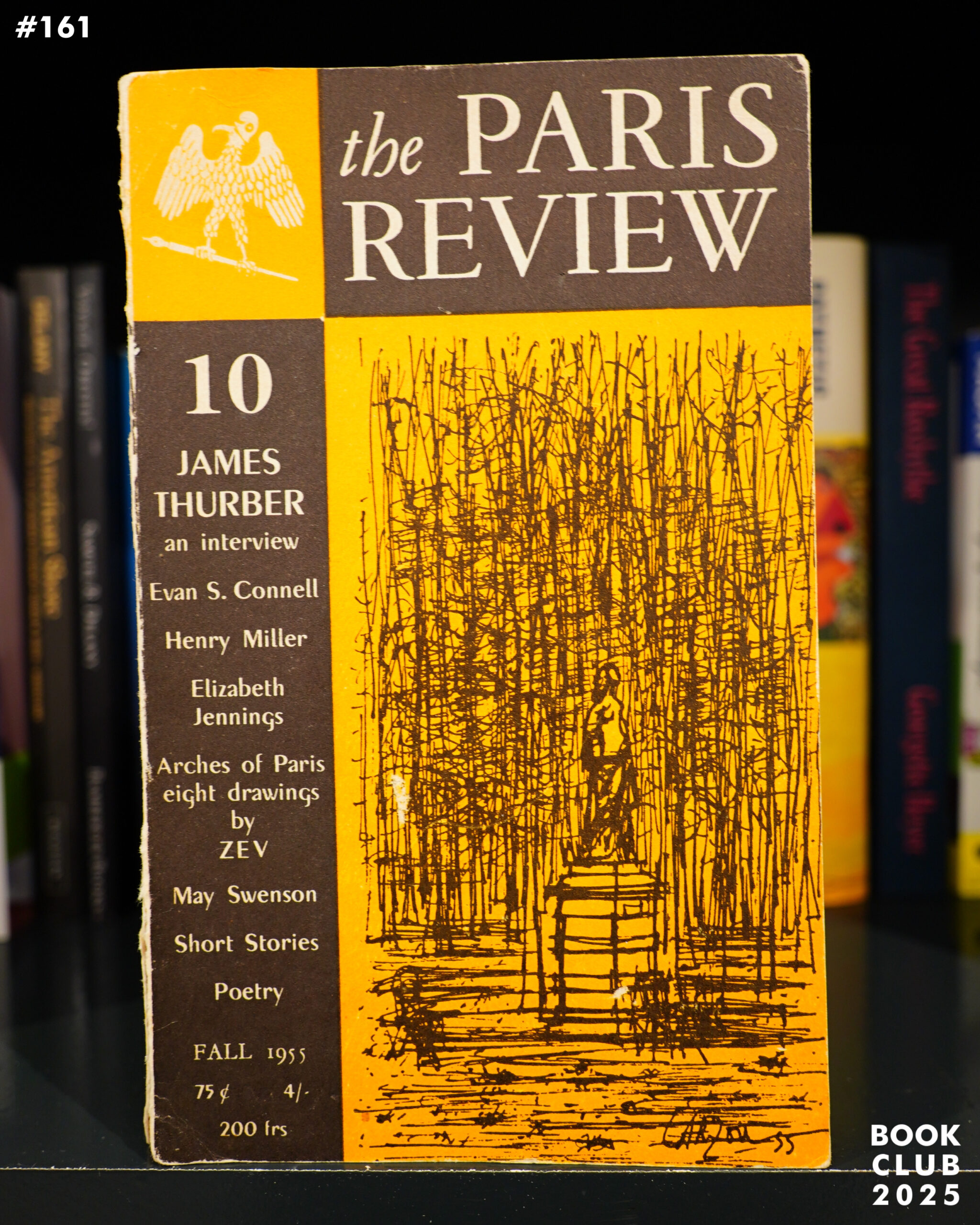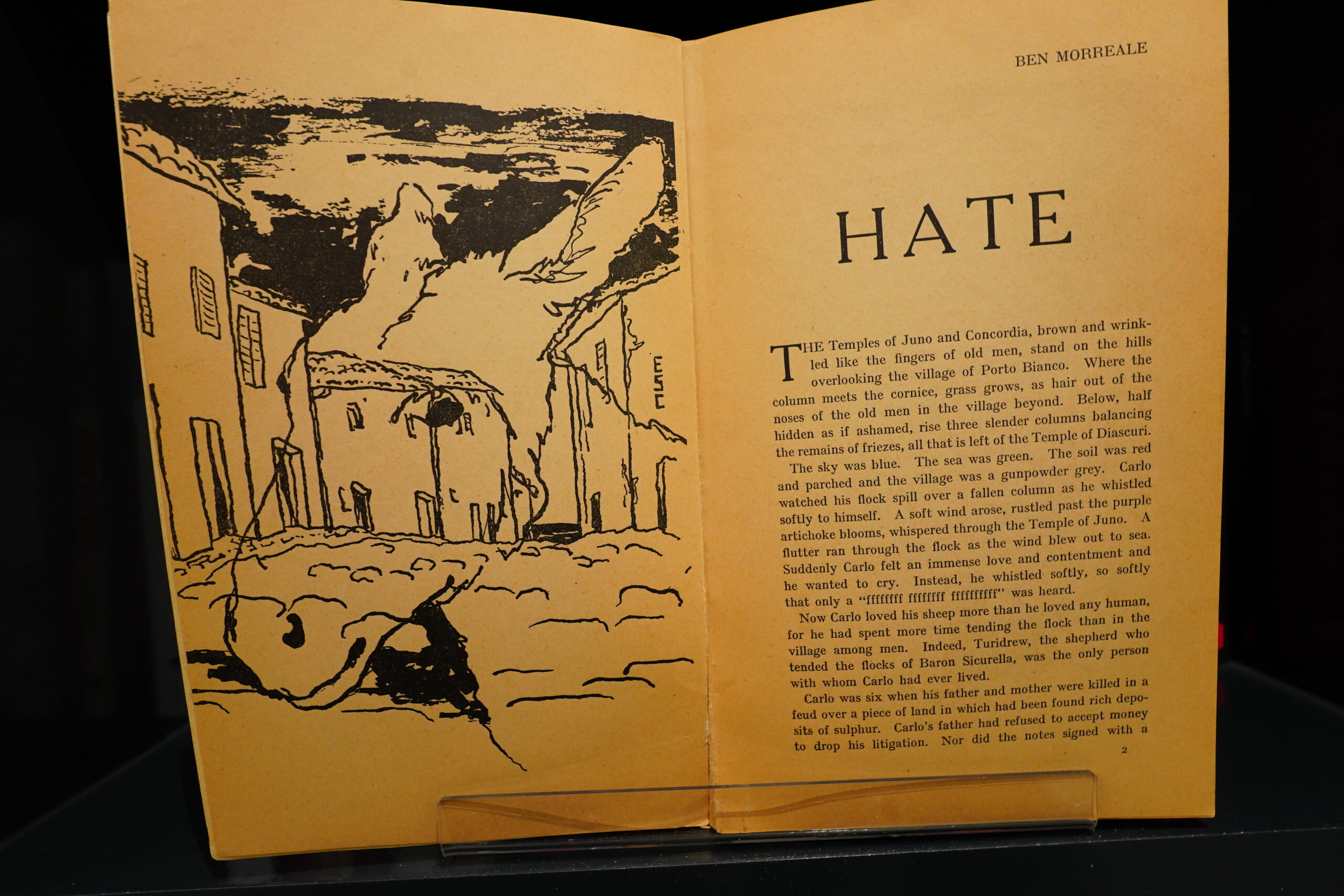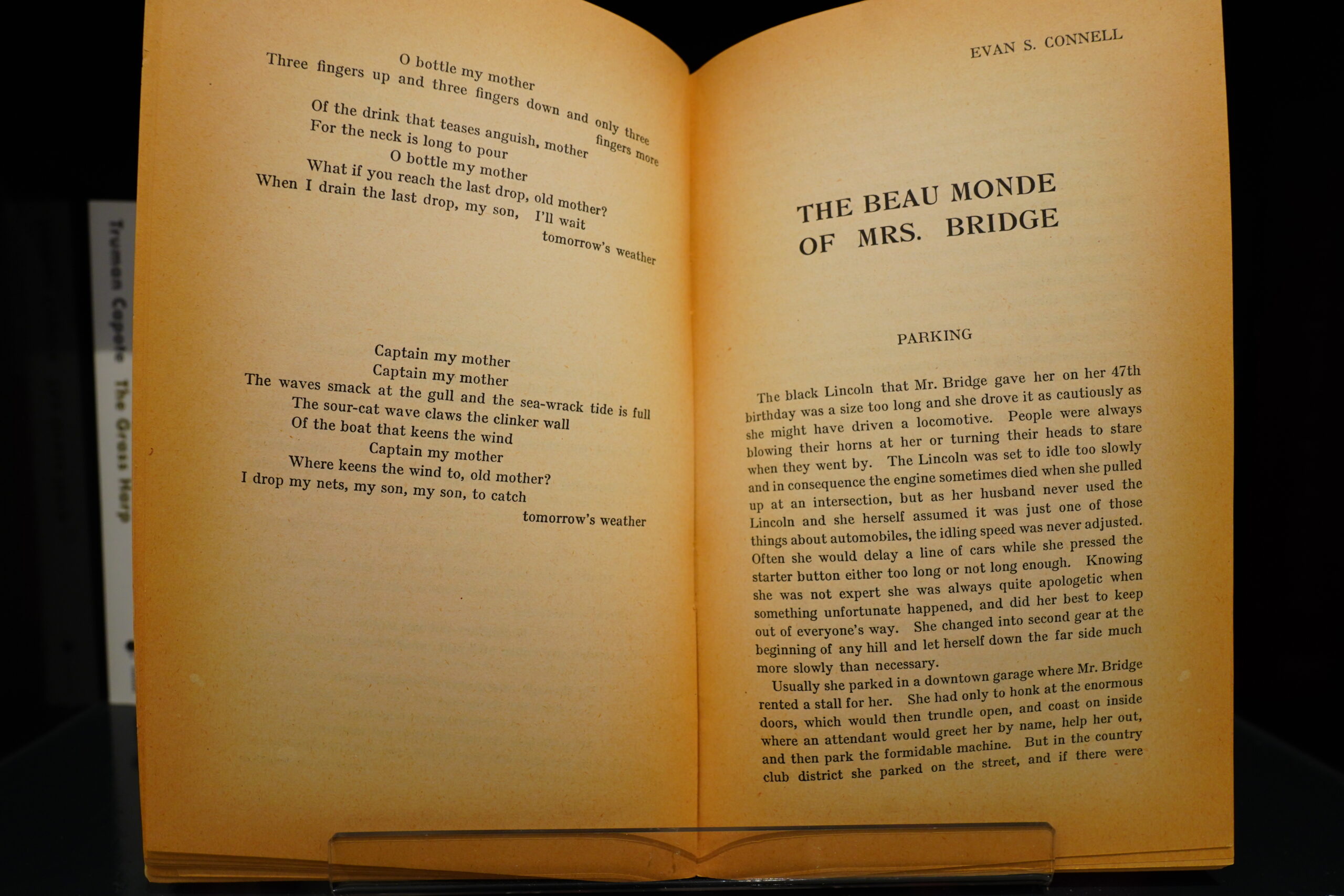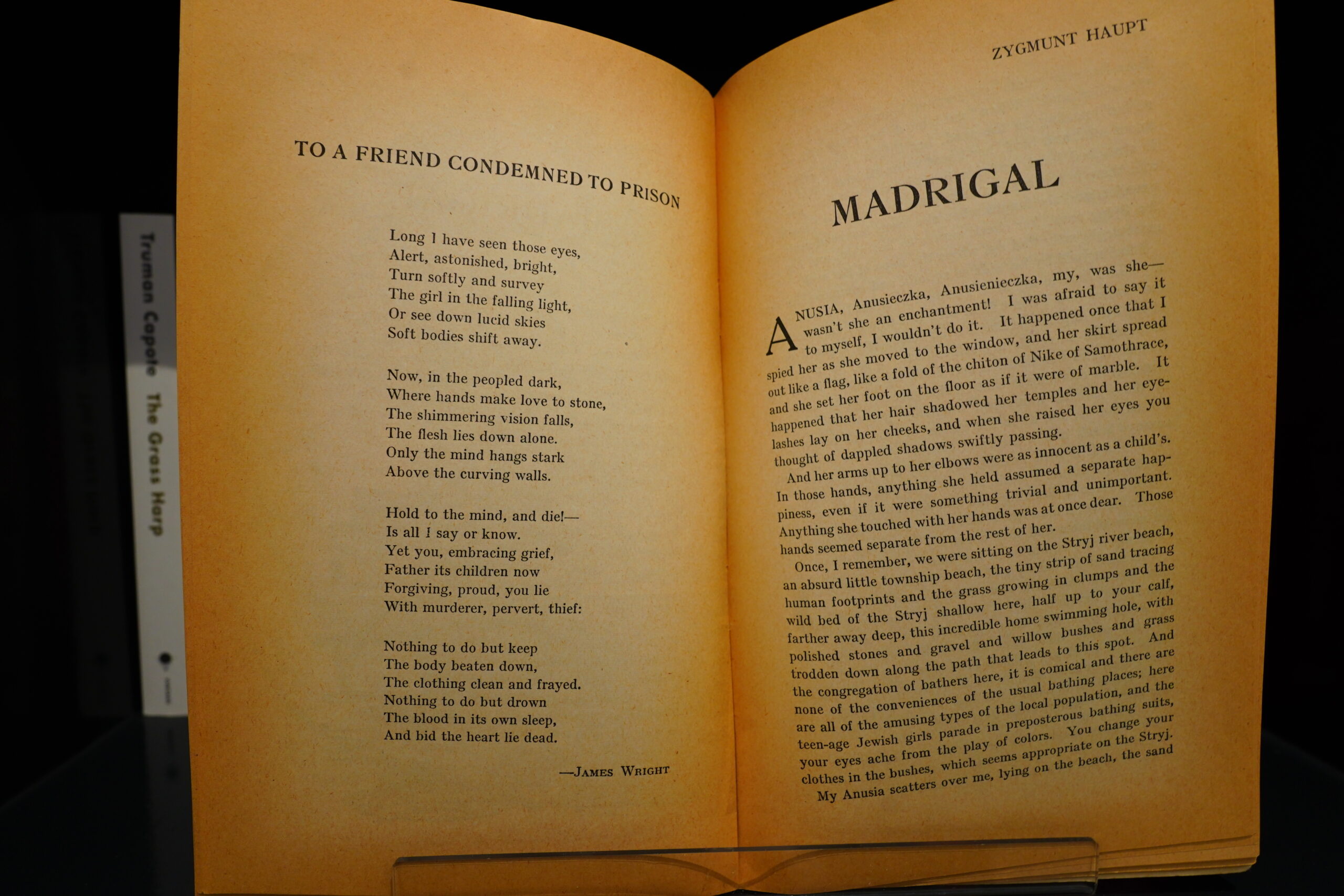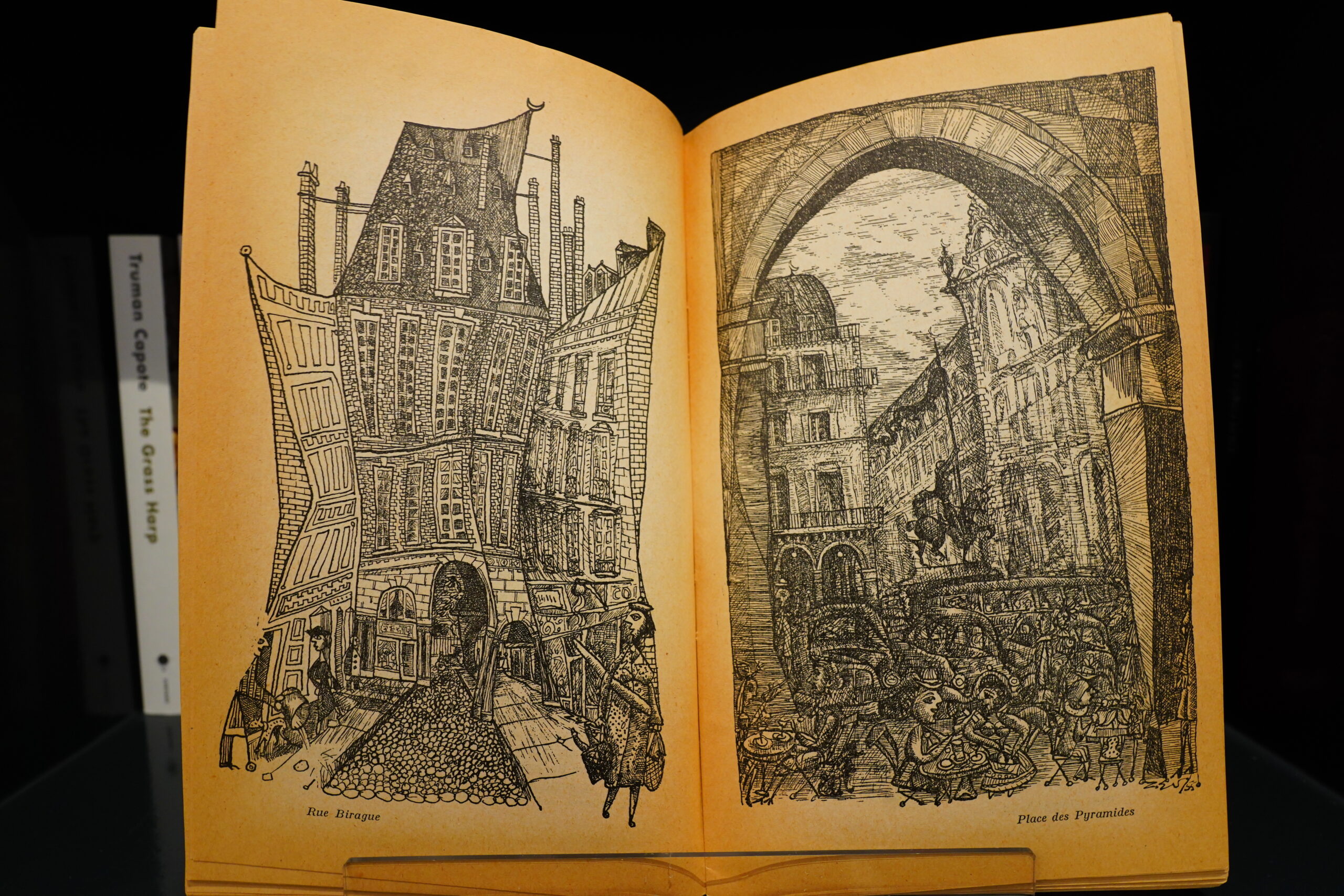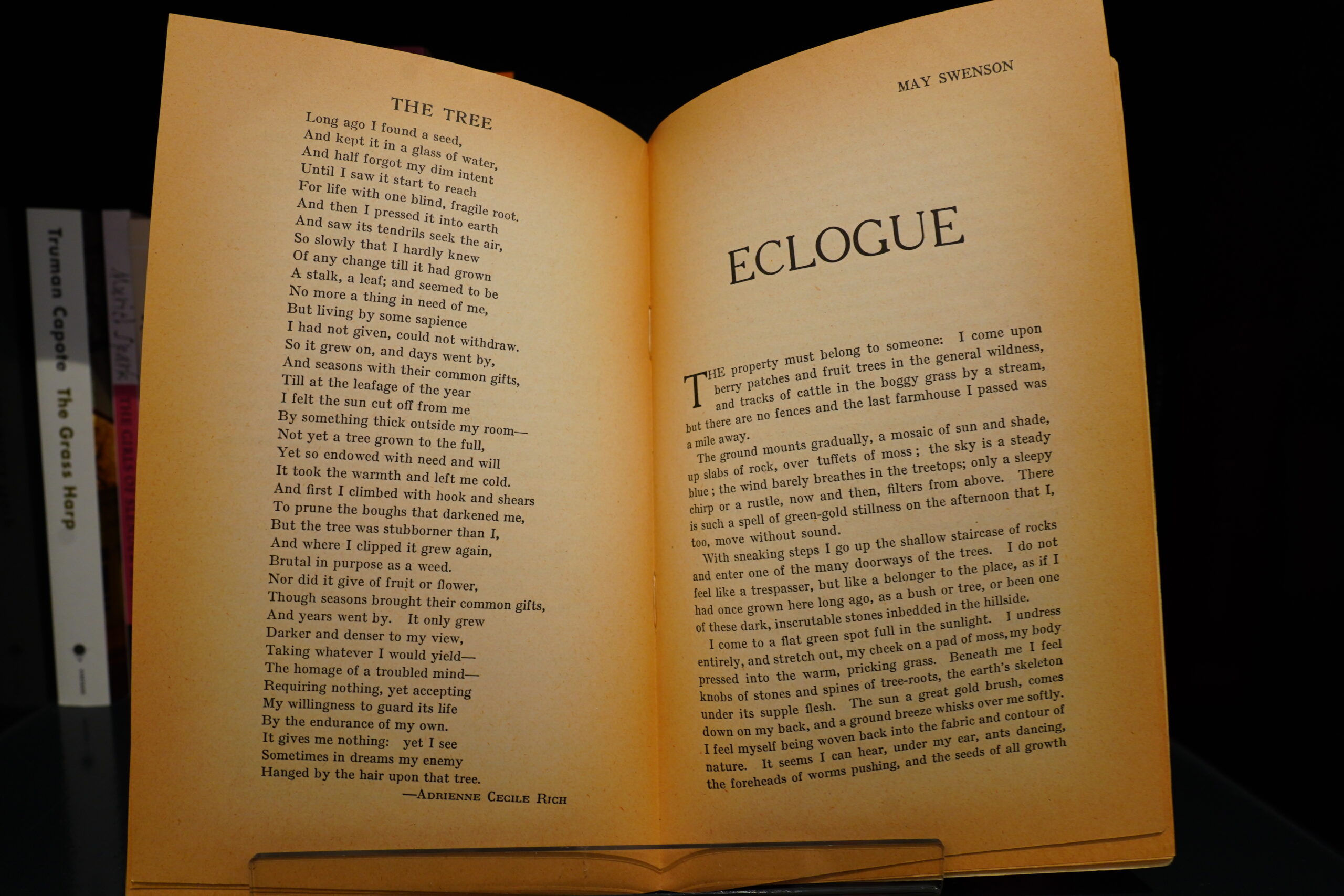Hey, I read some comics. It’s been a couple of weeks, but I finally got comics reading again the past few days. Let’s see what’s what.
I’ve read a couple of Cameron Arthur’s comics before, and I’ve found them really intriguing, so it’s fun to see that this Hidden Islands collection seems to have gotten a bit of attention.
Because it’s really good. Arthur’s has such a strong sense of flow, and it’s like every panel has a lot of storytelling going on.
Each story is done in a somewhat different style, but it still feels very cohesive.
And it comes with a bookmark. Nice.
This was originally published in Spanish…
… and I first thought that this was one of those secret short story collections. You know the kind — everything about the book makes you think it’s a “graphic novel”, and then it turns out to just be a collection of random stuff, which always feels very sneaky. I mean, I like collections of stories, but I guess they sell less?
Anyway, this is not that, but I thought it was, because…
… each chapter is done in a somewhat different style, and seems like they have different characters, but then things become clearer: It’s all one narrative. And it’s a good one!
But… the first few chapters are kinda naff, and it’s not until the above one (which is about halfway in) that I started enjoying it.
I like some things about the artwork, but I don’t really enjoy looking at these figures. They feel very 2021 — the large, bulbous bodies and tiny heads; Corporate Memphis in comics form. And it’s a problem for the comics — there’s very little to distinguish faces, so you have to keep thinking “right; that’s the one with the slightly longer hair” to make sense of what’s happening.
But the good parts are very good; there’s some really original things going on in the storytelling. The ending is the most groan-worthy thing ever, though.
Yes, I bought another one of these DC Finest collections. This time around, it’s a collection of Superman and Action Comics from 1970-71, and as usual, there’s no stated rationale for why exactly these two comics are collected together, or why this particular time period.
All the artwork is by Curt Swan (and mostly Murphy Anderson on inks), so perhaps that’s the reason? In any case, Action Comics (seen above) is quite different from Superman (seen below) in this time period, and it makes for an interesting contrast.
Action Comics is rather still in the 50s/60s zany adventure mode, but not quite as zany as they used to be. It’s like it’s more aimed at nine year olds than five year olds?
Meanwhile, Superman (“The New Adventures Of”) has several b plots that go on for dozens of issues (written by Denny O’Neil), so it’s more like “modern” super-hero comics.
But is any of this any good?
Well, I read a few of these comics back when I was nine myself, and I haven’t read them for many, many decades, so it’s hard to say what’s nostalgia and what’s not, but I really enjoyed reading this collection. Everything is so low stakes — Superman doesn’t have to go on A Mission To Save All The Multiverses From Being Destroyed even once, and that’s so refreshing. It’s just very readable, somewhat silly stories with somewhat attractive artwork.
I think I’m going to buy more DC collections from the 70s, perhaps. It hits a sweet spot, at least for me.
Look at how many issues of Spirou I’ve read! Je suis très fier.
Spirou is very variable, though — whether it’s actually enjoyable depends on what they’re serialising, and this period has been, like, bad. The main serial are all so samey, and worse — after serialising one album, they start serialising the next one! It feels like it’s been months just of junk like L’île de minut…
… Mi-Mouche (ok, ce n’est pas horrible, mais…)…
… and Les sœurs Grémillet…
… et le pire, c’est Louca. Beurk!
Yes, yes, yes, I know, this is a magazine for children, but all these are just so samey.
OK, I was wrong — the worst thing is this atrocity above: It’s a story set in Champignac’s youth (yes, the genius from Spirou), which has him going to Japan to commit suicide by going to where the Americans are going to drop the atom bomb. (But because of a heavy cloud cover, they drop the bomb on Nagasaki istead.)
It’s so… tasteless.
But there’s some fun stuff in these issues, too, so it’s not a total loss.
I don’t know whether Dans mes yeux by Bastien Vivès has been translated yet?
Anyway, I’ve never read a comic quite like it. Yes, there’s been other comics told 100% from a first person perspective, but in this one, we don’t even get to hear what that person says: All we get is what he’s looking at, and what the person he’s talking with is saying. Yes, it’s gimmicky, but it works.
It’s also slightly unnerving, because we learn so little about the… well, I can’t call him “narrator”, because he doesn’t narrate anything. But it feels like it could set us up for some horrible twist ending, but I’m happy to report that that doesn’t happen. It’s just very interesting.
That the artwork is so attractive doesn’t hurt a bit, of course.
I’ve bought a bunch of comics from ebay sellers for a blogging project that’s going to start next year, but some sellers have included other comics — either as packing material, or just gifts, I guess?
I was really surprised to get three 60s/70s DC comics, for instance. Surely they can’t be worthless? So, er, thanks?
The Green Lantern/Green Arrow book is from that classic “socially relevant” run, which I read as a kid. Neal Adams is always fun to look at.
I’ve never read this Swamp Thing before. I guess this is from after Len Wein/Bernie Wrightson left the book or something? It’s OK, anyway.
And I’ve never read The Creeper before, and there are no credits in the book, but I guess this looks like Steve Ditko? Inked by… er… Gil Kane did the cover, but it doesn’t look like he’s the inker here? Could it be… Al Williamson? Just from looking at that bottom left-hand face.
I forgot to google this when I was reading it, so let’s do that now…
Mike Peppe! Never heard of.
Some new comics were also included. This Predator thing from Marvel is so clichéd that it reads almost like a parody — the protagonist gets the Trauma Background (because that’s the proscribed background for all protagonists now) and the plot is the Revenge Plot (because that’s the only plot that’s allowed this week).
But within those confines, it’s not awful.
*gasp* Fantagraphics published a new Tardi last year, and I didn’t notice. How is this even possible.
Anyway, this is written by Dominique Grange, and it’s really good.
The way it moves between different time periods is very slinky, but it’s basically about France in the 60s and 70s, and it’s about struggling against the Fascist regime and all that good stuff. It sometimes gets a bit bogged down, but it’s mostly totally exhilarating to read.
And Tardi’s artwork is as amazing as ever. I give the album eleven thumbs up.
I’ve now bought an album by Dominique Grange, because I’m wondering what her music is like.
OK, that’s it.
